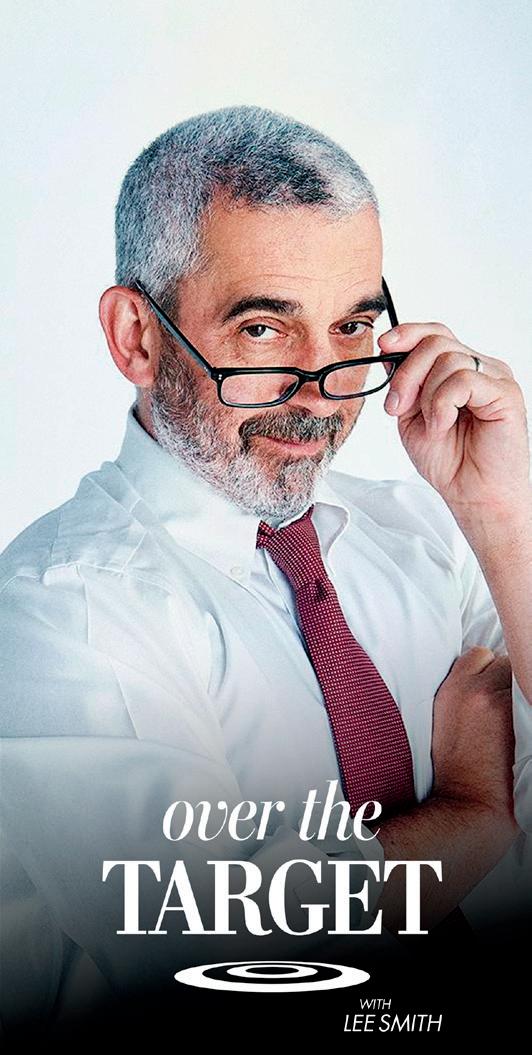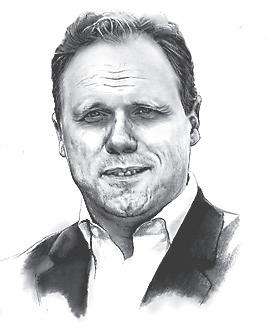The War That Still Kills
50 years on, Vietnam veterans still dying from Agent Orange
 By Allan Stein
By Allan Stein

50 years on, Vietnam veterans still dying from Agent Orange
 By Allan Stein
By Allan Stein
“it’s just cancer after cancer after cancer. All of us are in our 70s. What are you going to do?” Jerry “Doc” Spulecki told Epoch Insight reporter Allan Stein.
Spulecki was an Army combat medic and staff sergeant who went to Vietnam when he was 19 years old, while Agent Orange was in heavy use.
“Just being in the bush—yeah, it was everywhere,” Spulecki said.
Now 75, he suffers from ischemic heart disease and prostate cancer, and accepts his fate with a dispassionate, “What can you do about it?”
Agent Orange was a defoliant containing dioxin, a known carcinogen that’s associated with more than 14 chronic and potentially lethal health conditions. The U.S. military sprayed 19 million gallons of the herbicide over some 20 million acres in Vietnam from 1962 to 1971, when the U.S. government banned it because of its harmful effects.
“I don’t see much time left. It’s better up there than it is here. I’m telling you, man,” said David Lucas, 71.
Lucas has been diagnosed with Type 2 diabetes, prostate issues, and neurological disorders related to Agent Orange exposure. He was an Army corporal, just 19 years old, when he served a tour of duty from 1969 to 1973 as a helicopter door gunner while stationed at Chu Lai Air Base in South Vietnam.
“I hated Vietnam. I didn’t want to be there,” Lucas said. “But I enlisted.”
Read in this week’s cover story about what veterans continue to experience, 50 years after the last U.S. soldier left Vietnam.

The U.S. military sprayed 19 million gallons of Agent Orange to clear vast swaths of foliage in Vietnam from 1962 to 1971.
ALLAN STEIN/THE EPOCH TIMES
JASPER FAKKERT EDITOR-IN-CHIEFCHANNALY PHILIPP
LIFE & TRADITION, TRAVEL EDITOR
CHRISY TRUDEAU
MIND & BODY EDITOR
CRYSTAL SHI
HOME, FOOD EDITOR
SHARON KILARSKI
ARTS & CULTURE EDITOR
BILL LINDSEY LUXURY EDITOR
FEI MENG, BIBA KAYEWICH ILLUSTRATORS
SHANSHAN HU PRODUCTION
CONTACT US
THE EPOCH TIMES ASSOCIATION INC. 229 W.28TH ST., FL.7 NEW YORK, NY 10001
SUBSCRIPTIONS
READEPOCHINSIGHT.COM
GENERAL INQUIRIES, LETTERS TO THE EDITOR HELP.THEEPOCHTIMES.COM

ADVERTISING
ADVERTISENOW@EPOCHTIMES.COM
(USPS21-800)IS PUBLISHED WEEKLY BY THE EPOCH MEDIA GROUP, 9550 FLAIR DR. SUITE 411, EL MONTE, CA 91731-2922.
PERIODICAL POSTAGE PAID AT EL MONTE, CA, AND ADDITIONAL MAILING OFFICES.
POSTMASTER: SEND ADDRESS CHANGES TO THE EPOCH TIMES, 229 W. 28TH STREET, FLOOR 5, NEW YORK, NY 10001.
Jasper Fakkert Editor-in-chief
28 | ‘Incapacitated’ Pilots
Advocates call for investigations as a string of pilots suffer sudden medical emergencies.
42 | New Axis South Africa is helping a China–Russia–Iran axis, analysts say.
50 | COVID-19 Vaccines
After vaccine authorizations, documents reveal a dramatic spike in injury reports.
52 | Youth Health
Alabama schools are suing social media platforms over the mental health crisis.
56 | Electric Vehicles
The EPA’s new emission rules will increase our dependence on the CCP.
57 | Twitter’s Designation
Elon Musk refers to NPR as a “state-affiliated” media outlet, sparking a debate.
58 | US Economy
Bank failures must not stop the Fed’s inflation fight.
59 | Credit Crunch
Americans are having trouble getting credit after recent bank failures.
14 | The Silent Killer
Fifty years after Vietnam, veterans are still dying from Agent Orange.
18 |
Tangled Web
A deep dive into how the CDC helped silence vaccine hesitancy.
32 | In Limbo
Phoenix’s homeless wait for city action to displace them from “the Zone.”

36 | ‘I Was Terrified’ Swimmer Riley Gaines describes her assault by a transgender activist.
A
on April 13.
60 | European Banks
The banking industry was damaged by negative interest rates and monetary excess.
61 | Stock Market Tech stocks that were pummeled in 2022 are now big winners.
62 | ‘Go Woke, Go Broke’ Jeffrey Tucker talks about the ongoing collapse of America’s big institutions.
68 | Don’t Tell Anyone
Being told something in confidence requires you to keep it that way.
70 | Hilltop Hideaway
This lovely Hollywood Hills home was once owned by actress Emily Blunt.
72 | A Walk Through History
Old San Juan offers a glimpse back at the time of Ponce de León.
76 | Make Mom’s Day Great
It’s time to show extra appreciation for the most important women in our lives.
80 | Driving Profits
For an intriguing alternative investment, consider collectible cars.
83 | Happy Employees
A few suggestions for those who manage or supervise co-workers.
PARTICIPANTS AT THE EASTER PARADE and Bonnet Festival in New York on April 9. Each year on Easter, participants show off their very best bonnets along Fifth Avenue. The pageant is a New York tradition that dates back to the 1870s.
 PHOTO BY LARRY DYE/THE EPOCH TIMES
PHOTO BY LARRY DYE/THE EPOCH TIMES


Tents set up by homeless residents in the Zone stand just a few blocks from the Capitol District in downtown Phoenix on April 3.


How the CDC partnered with a “social and behavior change” initiative to silence vaccine detractors. 18
Assaulted by Activist
An advocate against males competing in women’s sports has been physically assaulted by a transgender activist. 36
Three school districts are suing social media platforms, alleging that they cause mental health issues in children. 52
$1.1 TRILLION
The U.S. federal budget deficit exceeded $1 trillion in the first half of the 2023 fiscal year.
$5 BILLION

The Biden administration is launching an initiative in excess of $5 billion to speed up the development of new vaccines and treatments for COVID-19.
10.3%

Online grocery prices were up 10.3 percent in March from the previous year, according to the Adobe Digital Price Index.
$500 MILLION
Former President Donald Trump has filed a civil complaint against his former lawyer Michael Cohen for more than $500 million in damages resulting from Cohen’s alleged breach of attorney-client duties, a Trump spokesperson says.
50 OFFICERS At least 50 undercover Metropolitan Police Department officers were embedded in the crowds at the U.S. Capitol in Washington on Jan. 6, 2021, according to a court filing.
“Today, our country is once again being tested. Once again, our divisions run deep, and the threat to our future is real.”
“[The United States has] to convince the Chinese Communist Party that there are real costs for their bad behavior.”Mike Pompeo, former secretary of state, on protecting Taiwan from the Chinese regime
PRESIDENT JOE BIDEN further accelerated the nation’s switch to electric vehicles by announcing two proposed federal rule changes aimed at reducing pollutants in motor vehicle emissions.
The changes, which would affect virtually all gasoline-powered vehicles on U.S. highways, are projected to save consumers an estimated $12,000 in fuel and maintenance costs over the life of a vehicle and to prevent almost 10 billion tons of carbon dioxide emissions through 2055, according to the Environmental Protection Agency.
DOCUMENTS OBTAINED BY AMERICA FIRST LEGAL FOUNDATION (AFLF) suggest that the Biden White House was involved in the FBI raid on former President Donald Trump’s home in Florida by way of a “special access request,” calling into question statements by Biden administration officials that the White House didn’t interfere or “get involved.”
“New NARA records obtained through America First Legal’s investigation into the circumstances surrounding the Mar-a-Lago raid further confirmed that the FBI obtained access to these records through a ‘special access request’ from the Biden White House on behalf of the Department of Justice,” AFLF said in a statement, referring to the National Archives and Records Administration (NARA).
AFLF said in a letter to NARA Acting Archivist Debra Steidel Wall that the White House’s claims about having no knowledge about the search “is surprising given the evidence showing that the FBI obtained access to these records through a special access request from the Biden White House on behalf of the Department of Justice.”
THE FBI IS warning people not to use public phone-charging stations since hackers have been using them to infect connected devices with malware.

“Avoid using free charging stations in airports, hotels or shopping centers,” FBI Denver said in a Twitter post. “Bad actors have figured out ways to use public USB ports to introduce malware and monitoring software onto devices. Carry your own charger and USB cord and use an electrical outlet instead.”
The move aims to further the president’s goal of ensuring that 50 percent of all new cars and light trucks and 30 percent of new medium- and heavy-duty trucks sold in 2030 will be zero-emission vehicles.
Critics say that the move, which will increase the price of new cars, was made without consideration of the ability of the nation’s supply chain to meet the demand.
The Biden administration has spent some $31 billion on the development of so-called clean transportation over the past two years.
PRESIDENT JOE BIDEN has signed a measure that immediately ended the COVID-19 national emergency, more than three years after it was enacted, the White House announced.
The measure, which states that the pandemic national emergency “is hereby terminated,” does not impact the public health emergency, which is still scheduled to terminate on May 11.

THE UNITED NATIONS is seeking vast new powers and stronger “global governance” tools to deal with international emergencies such as pandemics and economic crises, a new U.N. policy brief has revealed, and the Biden administration appears to support the proposal.
The plan to create an “Emergency Platform,” which would involve a set of protocols activated during crises that could affect billions of people, has already drawn strong criticism from U.S. policymakers and analysts.
GLOBAL PUBLIC DEBT is expected to surge faster than in years prior to the coronavirus pandemic, and to continue rising over the next few years, according to a report from the International Monetary Fund (IMF).

In the organization’s latest Fiscal Monitor report, economists stated that international government debt tumbled briefly as exorbitant pandemic-era fiscal and monetary policies were wound down. However, government debt is beginning to increase again, and IMF researchers warn that these levels will continue to rise over the next five years.
The United States and China have mainly contributed to this upward trend. If these economies were excluded from the calculations, “the public debt-to-GDP ratio would be going down” worldwide, said Vitor Gaspar, director of the IMF’s fiscal affairs department.
THE SCOTTISH GOVERNMENT has announced that it will challenge British Prime Minister Rishi Sunak’s decision to block its gender reform bill in court.
In December, the Scottish Parliament passed the Gender Recognition Reform (Scotland) Bill, which would enable anyone over the age of 16 to self-identify as their chosen gender.
But the UK government blocked the bill in January, citing its “adverse impact” on UK-wide equalities protection.
Scottish First Minister Humza Yousaf has confirmed his government will go to court to challenge the UK government’s decision.
Among those expressing concern is House Foreign Affairs Committee Chairman Rep. Michael McCaul (R-Texas), whose committee oversees U.S. foreign policy and involvement in international organizations. “We must be sure that any global protocol or platform operated by the U.N. respects U.S. national sovereignty and U.S. taxpayer dollars,” he said.

He also noted his concern that the proposed platform expands the authority and funding of the U.N. and the definitions of “emergency” and “crisis” to include, for instance, climate change.
Other critics who spoke with The Epoch Times expressed concern about the influence of the Chinese Communist Party (CCP) within the U.N., as well as the global organization’s well-documented corruption problems and its track record of dealing with previous emergencies.
“Allowing the U.N. to deal with this is the equivalent of putting the CCP in charge of global emergencies,” said Kevin Moley, former U.S. assistant secretary of state for international organizations.
















A
 symbolic homage to U.S. soldiers who died in Vietnam stands before The Wall That Heals, a touring replica of Washington’s Vietnam Veterans Memorial, in Camp Verde, Ariz., on March 29.
symbolic homage to U.S. soldiers who died in Vietnam stands before The Wall That Heals, a touring replica of Washington’s Vietnam Veterans Memorial, in Camp Verde, Ariz., on March 29.
CAMP VERDE, ARIZ.—WHEN THEY WERE young men nearly 60 years ago, Dennis Blessman, David Lucas, and Jerry “Doc” Spulecki survived the war in Vietnam, only to fight another battle at home against a silent killer decades later.
The men now suffer from similar “presumptive” conditions of service-related exposure to the highly toxic herbicide Agent Orange—ischemic heart disease, Type 2 diabetes, prostate cancer, and high blood pressure.
“It’s just cancer after cancer after cancer. All of us are in our 70s. What are you going to do?” Spulecki said.
On March 29, the three veterans attended a solemn gathering at Fort Verde State Historic Park in Camp Verde, Arizona— the weeklong site of The Wall That Heals, a touring memorial to Vietnam veterans.
The wall is a scale replica of the Vietnam Veterans National Memorial in Washington, which honors the 58,178 soldiers who died in the war.
On March 29, 1973, the last U.S. soldier left Vietnam. His name was Max Beilke, and he was killed in the 9/11 attacks 22 years ago.
Part of the Vietnam War’s painful legacy remains the military use of Agent Orange to clear away vast swathes of foliage from 1962 to 1971.
The project, dubbed Operation Ranch Hand, included spraying 19 million gallons of Agent Orange over some 20 million acres in Vietnam.
Agent Orange was a defoliant containing dioxin, a known carcinogen associated with more than 14 chronic
and potentially lethal health conditions. Among them are Type 2 diabetes, ischemic heart disease, leukemia, lung cancer, Parkinson’s disease, bladder cancer, and prostate cancer.
19
Million Gallons
Operation Ranch Hand involved spraying 19 million gallons of Agent Orange over some 20 million acres in Vietnam.
14
Health Conditions
Agent Orange contains dioxin, a carcinogen that’s associated with more than 14 chronic and potentially lethal health conditions.
300,000 Deaths
While the exact number of American soldiers exposed to Agent Orange remains unknown, an estimated 300,000 have died, according to the Cleveland Clinic.
“Dioxin is a compound made from burning chlorine with carbon and hydrogen,” reads the Cleveland Health Clinic website. “The molecules of these chemicals are toxic to plants, animals,
and humans. When dioxin enters your body, it can damage or destroy vital organs, cells, immune systems, and hormones. Dioxin is a carcinogen, which means it can cause cancer.
“Agent Orange was extremely deadly because the U.S. sprayed 20 times more than the manufacturer recommended in the environment. The effects of Agent Orange use are still present today among Vietnam veterans and Vietnamese people living in central and southern Vietnam.”
Monsanto and Dow Chemical were the primary companies that made Agent Orange, which the U.S. government banned in 1971 because of its harmful effects.
Although the exact number of American soldiers exposed to Agent Orange remains unknown, the Cleveland Clinic says at least 300,000 have died as a result.
Exposure to the chemical also has clinical ties to birth defects such as spinal bifida, a condition of abnormal spinal cord development in newborns.
U.S. soldiers who served in Vietnam and the Korean demilitarized zones and military bases in Thailand came into contact with Agent Orange.
Lucas was an Army corporal, just 19 years old, when he served a tour of duty from 1969 to 1973 as a helicopter door gunner while stationed at Chu Lai Air Base in South Vietnam.
“I hated Vietnam. I didn’t want to be there,” said Lucas, now 71, who lives in Camp Verde. “But I enlisted. We flew to areas where they sprayed a lot [of Agent Orange].”
The Army helicopters were called Hueys, and their massive rotor blades would kick up thick clouds of dust
from the ground that the soldiers breathed in.
Lucas believes that’s how he got exposed to the toxins.
About 17 years ago, Lucas began to experience neuropathy in his feet. Then one night, he awoke to find his toes were bleeding heavily.
“Look at my arms. That used to be muscle pushing on that skin,” Lucas told The Epoch Times. “I used to be a big fellow.”
The doctors diagnosed him with Type 2 diabetes, prostate issues, and neurological disorders related to Agent Orange exposure.
“I fell and almost died from [elevated] glucose a few months back,” Lucas said. “My blood pressure was 224 over 204. My blood sugar was 497. It’s supposed to be 100 or something.”
“I was in intensive care for a while,” Lucas said. “I got vertigo, and I couldn’t walk. I couldn’t even sit up. I’d fall over. After five days in the hospital, I came home and needed a walker. I’ve gone downhill since.”
Wearing a white T-shirt and camouflage cap, Lucas appeared frail. He struggled to use a cane to cross a field of grass to get to the traveling memorial.

He sees only grim health prospects ahead of him, but has made peace with his maker.
“I don’t see much time left. It’s better up there than it is here. I’m telling you, man,” Lucas said, looking at all the names of fallen soldiers engraved on the traveling wall, nearly breaking into tears.

“They’re honorable people. I love them all. They shouldn’t have died there.”
Dennis Blessman, 77, of California, said his Type 2 diabetes diagnosis came in 2010.
“Type 2 diabetes [comes from] presumptive exposure to Agent Orange. Anyone who served boots on the ground in Vietnam is presumptively exposed,” Blessman said. “Mine manifested with a diagnosis of diabetes and ischemic heart disease.”
Blessman was 21 when he served a tour in Vietnam from January 1967 to January 1968.
While stationed with a ground crew at Bien Hoa Air Base about 20 miles east of Saigon, Blessman spent long hours servicing aircraft weapons and C123 cargo planes that sprayed the herbicide.
“The planes had huge tanks and cargo bays and nozzles that went under the wings,” Blessman said. “That’s how they sprayed it.
“The spray nozzles leaked. The stuff was everywhere. You’d walk through it.”
Blessman would later recall in civilian life that Agent Orange smelled like Roundup, a commercial weed killer manufactured by Monsanto.
“When I bought my home, I went and bought some Roundup to kill some weeds and said, ‘Nope, I’m not going to spray this stuff,’” Blessman said.
“The cancers associated with Agent Orange are some of the worst. Once you get diagnosed, it’s like, ‘Hey, go home and get your affairs in order.’ Pretty nasty.
“The jungles in Vietnam, they’d spray the top, and it would grow back. I don’t think it helped much. I think they should have checked on the ingredients of Agent Orange closer and not relied on the chemical companies.”
He added that it’s “a real shame” that Vietnam veterans are still dying because of Agent Orange. “I’m fortunate to have the health that I have at 77,” he said.
Dow Chemical’s position today is that the U.S. government is responsible for the military use of Agent Orange in Vietnam.
“Dow has great respect for the men and women who served in the Vietnam War
and the others who were affected by it,” according to Dow.com. “The U.S. government bears the responsibility for its own military actions, including developing and using Agent Orange in Vietnam.
“Dow also firmly believes that historic wartime issues, including the use of Agent Orange, are appropriately a matter of resolution by the governments of the United States and Vietnam. The U.S. government has committed resources to address this issue, and collaboration between the U.S. and Vietnamese governments continues on a number of fronts.”
Under the PACT Act—which expands health care benefits for veterans—treatment has improved, Blessman said.

“Treatment at the [Department of Veterans Affairs] got a lot better when Trump was president,” Blessman said. “I know a few guys who do their full medical care at the VA, and they seem pretty happy, but that may change.”
Blessman, a retired aerospace engineer, receives government compensation for his service-connected disabilities, including post-traumatic stress disorder (PTSD).
He takes several medications daily
for diabetes and does daily finger prick blood sugar tests.
Jerry “Doc” Spulecki of California was an Army combat medic and staff sergeant who went to Vietnam when he was just 19 years old, and Agent Orange was in heavy use.

“Just being in the bush—yeah, it was everywhere,” Spulecki said.
Now 75, he suffers from ischemic heart disease and prostate cancer, and accepts his fate with a dispassionate, “What can you do about it?”
In six weeks, he will receive a defibril-
lator to help manage his heart disease, which does not run in his family.
Spulecki had his first experience with ischemic heart disease in 1994, while playing ice hockey in Anaheim at age 48.
“I dropped dead on the ice,” Spulecki said. “That was my first indication of heart disease.”
Though clinically dead, he was brought back to life with CPR.
Spulecki not only deals with heart disease, a presumptive condition, but he also has high blood pressure and PTSD.
He had harsh words for the U.S. government, which he said “lied like a rug” about the deadly health effects of Agent Orange.
“I resent that, and I’ll blame the 94th Congress [1975–1977] and Dow for lying to the American public,” Spulecki told The Epoch Times.
“If they knew the results, they should have warned everybody. We drank the water [in Vietnam]—we drank whatever we could. We had iodine tabs, but they never purified the water.”
The Department of Veterans Affairs didn’t respond to a request by The Epoch Times for comment.
“I’ll blame the 94th Congress and Dow for lying to the American public. ... If they knew the results, they should have warned everybody.”
Jerry“Doc” Spulecki, veteran (Left) A visitor pays homage at the traveling Vietnam veterans memorial in Camp Verde, Ariz., on March 29. (Above) David Lucas, 71, diagnosed with several presumptive conditions associated with exposure to Agent Orange, salutes during the National Anthem.

A general view of the Centers for Disease Control and Prevention (CDC) headquarters in Atlanta, in this file

‘social and behavior change’ initiative
r. Mary t alley Bowden, a Stanford-educated ear, nose, and throat doctor, isn’t afraid to voice her beliefs. During the height of the COVID-19 pandemic, she repeatedly used her platform on Twitter and TikTok to question the vaccines, promote ivermectin as a treatment, and call out pharmacists for refusing to dispense it.

But her efforts resulted in significant backlash. On Nov. 7, 2021, Dr. Danielle Jones, an OB–GYN who posts under the handle @MamaDoctorJones on YouTube, TikTok, and Twitter—and has millions of followers—put out a video accusing Bowden of “grifting,” rejecting science, and profiting from those who questioned the vaccine.
The video received thousands of comments, including from Team Halo members Dr. Zachary Rubin, a pediatrician, and Christina Kim, an oncology nurse practitioner. Team Halo is a social media influencer campaign formed as part of the United Nations Verified initiative and the Vaccine Confidence Project to increase vaccine uptake.
“That doc is problematic,” Rubin wrote. Kim followed with, “Wow. That ‘doctor’ should have her license revoked.”
On Nov. 12, 2021, five days after the video, Bowden received a text message from the Houston Chronicle that read: “Hi Dr. Bowden, I’m told you’ve been suspended from Houston Methodist pending further investigation because of your comments on social media. I plan to report that this afternoon but wanted to give you an opportunity to comment.”
Stunned, Bowden responded that the text was the first she had heard of the suspension.
The suspension turned out to be the tip of the iceberg. Over the following months, Bowden’s life was thrown into chaos as multiple social media influencers targeted her. However, the most dogged was a pharmacist named Savannah, who posts under the handle @rxOrcist.
“Savannah has over a million followers. She made a video about me because I have been calling out, online, pharmacists that were refusing to dispense ivermectin,” Bowden told The Epoch Times. “The majority of them happen to be Asian. So she, therefore, concluded that I was racist against Asians and called
Dr.
me a ‘xenophobic, racist [expletive],’ among other things. “Because she has so many followers, when she makes a video about you, you get an army of people coming after you. A lot of fake people [writing] reviews. That’s one of the biggest things. You can’t get them removed. I’ve tried to get them removed, and I can prove that they’re not my patients.”
Bowden says that she’d been kicked off of TikTok, is on probation on YouTube, had complaints filed against her, and has even been threatened at her office.
Bowden added that she’d been kicked off of TikTok, is on probation on YouTube, had complaints filed against her, and has even been threatened at her office, necessitating that she call security.
In the video, Savannah showed that she reported Bowden to the Texas Medical Board. The board declined to investigate her specific complaints. Still, they are pursuing two other complaints: one filed by Houston Methodist claiming a violation of patient care and one filed by Texas Health Huguley Hospital for prescribing ivermectin.
In the comments of Savannah’s video, Tyler Kuhk, a nurse and previous Team Halo member, according to web archives, and who posts under @thatsassynp,

wrote, “How these loons still have licenses is beyond me. Why is an ENT even treating COVID?”
Savannah is part of a group called Shots Heard, which calls itself a “rapid-response digital cavalry dedicated to protecting the online safety of health care providers and practices.” Kuhk is also a member. Savannah joined Shots Heard on Aug. 6, 2020, and Kuhk joined on Feb. 13, 2021.
According to its website, Shots Heard is an initiative under The Public Good Projects (PGP), a “public health nonprofit specializing in large-scale media monitoring programs, social and behavior change interventions, and cross-sector initiatives.”
Another of PGP’s initiatives is the Public Health Communications Collaborative (PHCC), which sits within the CDC Foundation—a nonprofit arm of the Centers for Disease Control and Prevention (CDC) established by Congress.
The goal of the communications collaborative, according to PGP, is to decrease misinformation and increase vaccine demand worldwide. And it’s using social media influencers to silence vaccine detractors.
Medical workers prepare to vaccinate people at a pop-up COVID-19 vaccination clinic in Leland, Miss., on April 29, 2021.
PGP is headquartered in New York and was founded in 2013. Its current CEO is Dr. Joe Smyser, who holds a doctorate and master’s in public health and completed his postdoctoral training at the CDC.
The Tennessee Department of Health states about Smyser and PGP, “Dr. Smyser has designed some of the United States’ most influential and impactful health campaigns to date in partnership with the CDC, FDA, Kaiser Permanente, Rockefeller, and Humana.”
According to its website, the CDC Foundation is “the sole entity created by Congress to mobilize philanthropic and private-sector resources to support the Centers for Disease Control and Prevention’s critical health protection work.”
Since its creation, the CDC Foundation has started more than 1,300 “health protection programs” and raised more than $2 billion in support for the CDC.
One of those health protection programs is PGP partner PHCC, which, according to its website, was formed in August 2020 to “provide unbiased communication about the COVID-19 pandemic.” And one of the ways PHCC accomplishes that is by putting out “Misinformation Alerts,” which are powered by PGP.

For example, on March 23, PHCC posted on its website that a “well-known anti-vaccine physician” claimed that COVID-19 vaccines caused an increase in miscarriages and stillbirths. It labeled it a “high-risk alert” and recommended “directly addressing and debunking the misinformation.”
That “debunking,” according to PHCC, includes using a “strong, robust social mobilization” to amplify messages from the World Health Organization and UNICEF, encouraging social media organizations to flag “misinformation,” and promoting “trusted pro-vaccine voices.”
On its homepage, Shots Heard states, “If you stand up for vaccine science, we’ll stand up for you.” It includes a link for people to apply to “sign up to defend vaccine advocates.” It also provides a link to “Alert the Shots
Heard Cavalry,” plus a link to a members-only Facebook group, which currently has 1,176 members.
An insider in the group who requested to remain anonymous for fear of being kicked out supplied The Epoch Times with screenshots and messages of the Shots Heard Facebook group.
In one “alert,” a Shots Heard member named Bernadine Huff posted, “It’s important for all of us to stop the insanity and to call out other healthcare workers that don’t believe in science.”
She encouraged Shots Heard members to “report” a graduate nurse named Megan to the Ohio Nursing Board for providing information on how to get a medical exemption for the COVID-19 vaccine. The replies from numerous Shots Heard members simply state, “reported.”
In another “alert,” Shots Heard group administrator Jeff Sykes posts, “Hey Shots Heard, it’s been brought to our attention that Dr. Scott Jensen has been using his online platforms to spread misinformation about COVID-19. ... We need your help reporting him.”
Shots Heard member Marcia Fiamengo posted, “Need help reporting this group,” and linked to a group promoting ivermectin. Among the many who replied was New York’s Suffolk County Department of Health account, which wrote, “Reported.”
Fiamengo also posted on Dec. 29, 2021, “Fantastic news,” and attached a screenshot of Dr. Robert Malone’s suspended Twitter account. Shots Heard member Angie
Anderson states in the comments, “Ooooh, I just report ed a few of his posts yesterday. So satisfying when you see real results.”

On March 24, 2022, Fiamengo encouraged Shots Heard members to report Bowden. Again, Suffolk County Health responded, this time with “Done.”
On May 2, 2022, Fiamengo again made a celebratory post. This time for an American Frontline doctor’s being stripped of all state licenses after prescribing ivermectin. “Wooooo!!!! Another one bites the dust!” she wrote.
Shots Heard doesn’t limit itself to reporting single health care practitioners. On Sept. 12, 2021, Shots Heard member Liz Ditz reported a preprint by researchers Dr. Tracy Beth Hoeg, Allison Krug, Josh Stevenson, and Dr. John Mandrola that found that vaccine-induced myo carditis might be worse than COVID-19-induced myo carditis. Shots Heard members were outraged.
Moreover, Shots Heard doesn’t limit itself to sim ply “reporting.” When Bowden posted on Twitter, “Are Americans supposed to take this [expletive]? We don’t want your shot, and we especially don’t want it for our kids,” her post was flagged and flooded with Shots Heard member comments.
Such tactics are called “gang stalking,” Nicole Sirotek, a registered nurse in Nevada and the founder of American Frontline Nurses, told The Epoch Times.
“[Shots Heard members] make videos about [the of fending health care worker] saying they need to be deli censed, then [Shots Heard] followers go and hunt down

the nurse and swarm the licensing board,” she said.
Sirotek has been the victim of many such attacks from Shots Heard and Team Halo—the two groups share many of the same members.
For example, in December 2022, Team Halo member Jess, who posts under the TikTok handle @jesss2019, doxed Sirotek on TikTok by revealing a previously courtsealed name change. Jess is a “Featured Influencer” for The Health Influencer Council, another PGP project that includes Shots Heard, and This Is Our Shot—a “diverse coalition of health heroes” who engage on social media to combat misinformation and build vaccine trust, according to its website.
An Inside Look
Tyler Hardy, a previous Team Halo member known as “your favorite field epidemiologist” until he ignited a social media firestorm for lying about some of his credentials, told The Epoch Times he’s seen both sides of the social initiates.

“I joined Team Halo at the beginning of 2022, in Jan
vannah accused him of faking his credentials. For that, Hardy explained that another TikTok user harassed him to prove he was a licensed social worker and addiction counselor. However, Hardy didn’t have such credentials and “flashed” another person’s certificates in a TikTok video.
Hardy expounded that he never practiced under that person’s license and did it to “embarrass” the other poster.
“I simply flashed it on the screen as sort of a diversionary tactic, and so I understand that was really stupid,” he said. “It was a combination of constantly being harassed and bombarded, the fact that I was going through a pretty terrible breakup at the same time in my personal life. And also, it was just the stardom of social media. I didn’t think I could do anything wrong.”
Hardy is apologetic about his actions but added that Team Halo allowed it to blow up into something much bigger. Before he officially joined Team Halo, Hardy had to fill out an application that included two forms of identification and his college credentials. Plus, Team
But that wasn’t the end of Hardy’s Team Halo experience.
“Anytime I apply for a job, people know and they call the job ahead of time to tell them that I’m, you know, a monster and that I stole a black woman’s credentials.
“And I’m just like, ‘You know what? I deserve to be held accountable for the lies that I told,’ I’m not diminishing that. But I don’t have to be held accountable by anybody but God and the court system. I’m working on doing better. I’m going to therapy; I’m doing the right thing. But I constantly hear it. I’m constantly harassed by these people online.”
Hardy said about Shots Heard and Team Halo, “If you are against [them], you’re destroyed, and there’s no retribution. Like, there is no retribution whatsoever.”
In addition to its social media initiatives, PGP runs The Public Good News, a nonprofit newsroom “dedicated to accurate health news.” It states of its mission, “The erosion of trust in science and shared facts is a threat to our democratic way of life.” On Jan. 20, it posted an article titled, “CDC data shows bivalent boosters are safe.”

To combat “vaccine hesitancy worldwide,” on April 29, 2021, UNICEF, the Yale Institute for Global Health, and PGP started the Vaccination Demand Observatory.
Of its efforts to increase vaccinations, PGP stated, “The coronavirus pandemic is the defining public health crisis of our time, and the U.S.—and the world—is currently
in the middle of the largest immunization campaign in history. Yet misinformation threatens these efforts, fueling an ‘infodemic’ of myths, lies, and inaccurate information. In the campaigns below, we use our expertise in media monitoring to fight misinformation and decrease vaccine hesitancy.”
Some of PGP’s recent partners include Google, The Rockefeller Foundation, UNICEF, and Yale Institute for Global Health.
PGP, Shots Heard, and Team Halo didn’t respond by press time to requests by The Epoch Times for comment.
The goal of the communications collaborative, according to PGP, is to decrease misinformation and increase vaccine demand worldwide. And it’s using social media influencers to silence vaccine detractors.Licensed professionals and others who question COVID-19 vaccines are often targeted by multiple social media influencers who try to silence them.
It’s not climate change. It’s not raging inflation or even the national debt. The real threat to the United States and to the world is the Chinese Communist Party’s (CCP’s) 100-year plan to defeat America and establish world domination. There’s no urgency in the mainstream media. That’s why “The Final War” had to be made. Anchored by senior investigative reporter Joshua Philipp, and one-and-a-half years in the making, “The
Final War” is a film that is so relevant to current events and so important that we’re offering it to EVERYONE for free. It will answer your questions about the pandemic, the impending invasion of Taiwan, and how the CCP works to keep the United States occupied with at least four global adversaries.
See the film. Know the danger. Be prepared. The final war is already underway.

‘THE
 PALESTINIAN CHILDREN PLAY in Gaza City on April 11.
PHOTO BY MOHAMMED ABED/AFP VIA GETTY IMAGES
PALESTINIAN CHILDREN PLAY in Gaza City on April 11.
PHOTO BY MOHAMMED ABED/AFP VIA GETTY IMAGES


Calls for investigations as string of pilots suffer sudden medical emergencies
BY JANICE HISLEConsidering that airline pilots are “a very healthy” segment of the population, it’s disturbing to see a recent cluster of pilots becoming “incapacitated,” according to Josh Yoder, president of U.S. Freedom Flyers, an aviation advocacy group.
During the past month, seven airline pilots have suffered sudden medical problems, according to U.S. Freedom Flyers and Dr. William Makis, a Canadian doctor who has been documenting the trend worldwide.
Two of the incidents happened in the United States; both flights had to be diverted so the pilots could receive medical care. The other five incidents occurred in other countries.
The latest incident, on March 25 in Romania, involved a pilot who is just 30 years old, Makis said, citing a news report.
Based on private conversations with other pilots, Yoder and Makis said that they believe that many more medical emergencies are likely escaping public notice.
“I’ve been doing speaking events about COVID-19 vaccine injuries, and I’ve had pilots meet with me directly after the events, and they relayed to me stories about close calls and cardiac incidents that never make it into the news,” Makis told The Epoch Times.
Although the COVID-19 vaccination status of the seven pilots in the March incidents was unknown, Makis and Yoder are both concerned about the implications for aviation safety.

Sudden medical crises have occasionally struck pilots over the years.
“But it’s never happened with the frequency that we’ve seen over the past year and a half,” Yoder, 37, a pilot for 14 years, told The Epoch Times.
Pilots must comply with strict medical standards and undergo regular tests to ensure they are healthy enough to fly safely.
Yet many pilots complied with “jab-or-job” ultimatums and got the COVID-19 shots, Yoder said, increasing concerns that side effects from the shots could be manifesting in these recent incidents.
But that possibility is politically charged; investigators seem reluctant to delve into it, Yoder and Makis agreed.
Yoder said medical privacy considerations further enshroud these incidents. He said information is kept under wraps “unless the pilots themselves or their families are willing to speak out, which they usually aren’t.”
Few details have emerged about the two recent incidents involving U.S. pilots.
In an email to The Epoch Times, Southwest Airlines said the term “incapacitated” may not be accurate in describing the March 22 incident involving one of its pilots. However, that word was repeatedly used during air-traffic control radio transmissions about the incident, which The Epoch Times obtained from LiveATC.net.
Southwest Flight 6013 was heading to Columbus, Ohio, from Las Vegas and had to return to the Las Vegas airport “when one of [the] pilots needed medical attention,” the airline stated.
A person speaking on the LiveATC.net recording says that the captain of that flight, a 47-year-old male, initially complained he was suffering stomach pain.
About five minutes later, the pilot “fainted, or became incapacitated of some sort,” then regained consciousness about
a minute later, the reporting person says.
Sometimes, stomach discomfort is “referred pain” from another area of the body, Makis said, noting it’s hard to tell what happened to the Southwest pilot without additional information.
When the Southwest pilot fell ill, “a credentialed pilot from another airline” happened to be on board, Southwest said. That pilot “entered the flight deck and assisted with radio communication while [the] Southwest pilot flew the aircraft,” the airline stated.
“We greatly appreciate their support and assistance.”
As the plane was preparing to land, a person on the recording said the Southwest pilot who took ill was in the back of the aircraft with a flight attendant and needed to get “on an ambulance immediately.”
After the plane landed safely in Las Vegas, another crew was assigned to fly the aircraft to its destination.
“We commend the crew for their pro-
A recent cluster of pilots becoming “incapacitated” might come from compliance to COVID19 vaccine mandates, an advocacy group says.

fessionalism and appreciate our customers’ patience and understanding regarding the situation,” Southwest said.
Southwest Airlines declined to answer further questions about the pilot’s condition.
The other recent known incident in the United States involved a United Airlines flight on March 11.
In an email to The Epoch Times, the airline stated: “United flight 2007 from Guatemala City to Chicago landed safely in Houston at 5:39 p.m. to address a medical situation. New crew members were assigned, and the flight subsequently departed Houston for Chicago at 8:00 p.m. (local time).”
The Epoch Times provided United Airlines with a link to a report from an independent media outlet, CDM.Press.
The airline didn’t dispute the report, which asserted that an internal United Airlines document showed that the leftseat captain suffered chest pains, and the right-seat pilot took over flying the aircraft.
Yoder said he “spoke with sources close to the incident who confirmed a pilot was removed from the flight after experiencing significant cardiac symptoms.”
Regardless of whether the COVID-19 shots played any role in these cases or other recent incidents, Yoder faults the U.S. Federal Aviation Administration (FAA) for failing to investigate.
When asked to comment on such cases, the FAA has repeatedly stated that it “has seen no credible evidence of aircraft accidents or incapacitations caused by pilots suffering medical complications associated with COVID-19 vaccines.”
Yoder acknowledged that it’s difficult to prove whether sudden health
Some people in aviation circles have been pressing to allow airlines to switch to single-pilot operations. If that happens, an incapacitated pilot would have no backup.
issues are related to aftereffects of the COVID-19 shots.
“But this isn’t just about the vaccine,” he said. “We’re seeing a safety signal, and that safety signal is not being adequately addressed.
“While people will say that’s anecdotal information, it needs further investigation.”
He and U.S. Sen. Ron Johnson (R-Wis.) have accused the FAA of turning a blind eye to the possibility that COVID-19 shots adversely affect the health of some pilots.
In a March 15 Twitter post, Yoder shared an image of an FAA document sent to a pilot.
The letter reminded the pilot that he was required to report any change in his health because of his “history of possible vaccine-induced myocarditis,” which is heart inflammation.
Despite such situations, Yoder is troubled that the FAA continues to allow COVID-19 injections for pilots.
Every day, about 45,000 flights traverse the United States’ skies, according to the FAA. Fourteen years have passed with no fatal commercial airline crashes, so no one is saying that the skies are unsafe. But recent computer failures, near-collisions, and the apparent increase in pilot incapacitations are all concerns that need to be addressed, Yoder said.
Makis cited three additional factors that have heightened his concerns.
Some people in aviation circles have been pressing to allow airlines to switch to single-pilot operations instead of requiring two pilots in the cockpit. If that happens, an incapacitated pilot would have no backup.

In addition, Makis is aware of some pilots who have been allowed to undergo “virtual” health examinations instead of in-person screenings. He wonders whether key health indicators could be missed during the online “visits.”
And in the United States, Makis
notes, the FAA recently widened the acceptable range of a heart test for pilots. This raises concerns that pilots will now be cleared to fly when they formerly would have been referred for additional health tests.
Makis isn’t a pilot and has no special knowledge of aviation. But he blogs about patterns he sees in health; that’s why reports of pilot incapacitation caught his attention.
He’s working with others to gather data about “emergencies in the air.” Makis describes himself as “an independent physician who is concerned about what’s going on.”
Regardless of whether the COVID-19 shots have anything to do with these pilot incidents, “I think that there should absolutely be, you know, proper scientific medical investigation of this phenomenon,” Makis said.
“I’m seeing a definite increase in the frequency of these incidents, and we need to get to the bottom of it.”
Phoeni X— s hel B y o rd has big plans for himself at 18. First, he plans to get his high school equivalency diploma, a good job, an apartment, and “maybe a cat, of course.” Then go to college and major in chemistry or teaching.
All attainable and worthwhile goals were seemingly out of reach on April 3 as Ord, wrapped in a dirty blanket, strolled down the sidewalk in the homeless encampment known as “the Zone” near Phoenix’s Capitol District.

“I sleep over there,” said Ord, pointing to a tent sandwiched in between
other tents and piles of debris. “I pretty much do my thing. I’m a good kid. I don’t smoke or do alcohol or drugs.”
“I’m out here because my family wasn’t helping me to live independently.”
Ord said he became homeless in the Zone about a month ago. But soon, his tenuous living situation may face yet another upheaval, this time by a judge’s order.
On March 27, Maricopa County Superior Court Judge Scott Blaney declared the Zone a “public nuisance” and gave the city until July 10 to show substantial movement in shutting down the homeless encampment.
Ord said he doesn’t “entirely know” what
happens next to an estimated 1,000 homeless people camped in tents and rundown shacks within the 13-acre urban enclave.
“Who knows where I would go even?” Ord told The Epoch Times.
For now, it’s an open question, as the city has yet to take action.
In a previous report, city of Phoenix spokesman Dan Wilson told The Epoch Times the city is reviewing the judge’s ruling.
Blaney wrote in the 23-page lawsuit that the city is primarily at fault for the Zone’s existence and becoming the ugly, foul-smelling, drug-ridden tent community it is today.
Through its “erroneous” interpreta-
tion of another court order preventing the enforcement of public camping laws, the city of Phoenix “stopped or greatly decreased enforcement of other healthy, quality of life, and even criminal laws and ordinances in the Zone,” Blaney wrote in the declaration.
Today, the Zone is like any other impoverished neighborhood, stretching from 7th to 15th Avenue, Madison, Grant, and Van Buren streets, mired in squalor and desperation.
Local contractor Brian Williams said: “Instead of feeding Ukraine, they need to help these people out, man. Help our people out here. Why don’t they give all that money going there to these people?”

Williams said he had “no idea” where the homeless would end up with the judge’s ruling.
“Probably find another Zone. I see them all over Phoenix. Maybe they can find someplace for them,” Williams told The Epoch Times.
“It’s like a colony here now. I didn’t know there were so many homeless people. It’s pretty sad.”
Arizona state Sen. Catherine Miranda stood in the middle of 12th Street on
THE ZONE IS currently home to around 1,000 homeless people camped within a 13-acre enclave.

April 3, monitoring the situation.
All around her were tents of different shapes and sizes lining the street on both sides as people wandered about, looking hopeless and trying to maintain a semblance of normal life.
Miranda acknowledged that many homeless residents are seniors relying on a host of social services and charitable organizations in the Zone.
“It’s just pure sadness for me. It’s frustration. It’s anger,” Miranda said.
“There are so many different reasons why people are homeless. There are evicted people out here. People are one paycheck away from being evicted. There’s drug addiction. There’s alcoholism,” she said.
“Because it’s so big, I believe the city and the state have not worked together” to solve the crisis. “The city cannot do it alone, and the state can’t.”
Miranda is the lead sponsor of bipartisan legislation seeking to provide shelter and better sanitary conditions for people living in the Zone.
SB1585 would allocate $200 million to build housing and get people the services they need, she said.
A majority in the state Senate recently approved the bill, currently held up in the House because of what Miranda said boiled down to “politics.”
On March 30, Arizona Gov. Katie Hobbs, a Democrat, vetoed legislation to prohibit homeless encampments on public property, including streets and sidewalks.

“The legislature is holding my bill hostage because of politics on the backs of human lives dying as we speak,” Miranda told The Epoch Times.
“There is not enough money and resources. The two [court] rulings conflict,” she added. And although her bill is “not the silver bullet to the problem” of homelessness in Phoenix, “it’s at least a huge start.”
In 2022, local business owners filed a lawsuit against city officials for allowing the Zone to grow and create an unsafe environment.
Bill Morlan, president of Electric Supply Inc., located at 917 West Madison in Phoenix, and in the Zone, said he chose not to participate in the lawsuit. Instead, he
(Above) Shelby Ord has been homeless since March. “I’m out here because my family wasn’t helping me to live independently,” he says. (Right) A homeless person walks among piles of debris in the Zone. “There are so many different reasons why people are homeless. There are evicted people out here. ... There’s drug addiction. There’s alcoholism,” state Sen. Catherine Miranda says.
believes there’s another solution.
“If [Judge Blaney’s] ruling means getting people off the street and someplace better—fantastic,” Morlan said. “The ruling isn’t and shouldn’t be to chase them somewhere else. The ruling is and needs to be the city has to get people places to stay.”
Homeless enclaves such as the Zone are “not a good idea for anyone,” he said.
“This is terrible for the people out there. It is terrible for people here. It’s terrible for the neighborhood. I’m lucky that many of my customers tend to be electricians, maintenance guys— they’re not afraid.”
While Morlan manages to exist in the Zone, it remains a blight on downtown and Capitol District.
Just recently, there were two murders and a dumpster fire containing a dead body, he said.
“People go to the bathroom in the parking lot. It’s a lot worse for them than it is for me [but] it needs to be fixed in a way that’s good for everyone. I can’t say that enough,” Morlan said.
A woman who lives on Madison Street in the Zone told The Epoch Times she’d been renting the same apartment for the past 11 years.
“One day, I was asleep. The next day, I woke up, and the whole mess was out there. It’s gotten worse and worse,” she said.
“They don’t bother me. I don’t bother them. I don’t know what [city officials] can do. But if you keep handing out food and free things—free this, free that— they won’t want to leave. You’ve got men who don’t work and don’t want to work. They get all these freebies.”
She said it wasn’t always bad in her neighborhood.
“The city of Phoenix was beautiful at one time. You could see the beautiful buildings. You could see the beautiful lights. Now, all you see is tents and people walking down the streets, fighting
don’t understand it at all.”
Kerry, a homeless woman in the Zone, worked in customer service before losing her apartment, then her job, and was forced to live on the street.

She said it would be “nice if things were different.”
“When I first became homeless, I had a full-time job. I got priced out [of rent]. Then trying to get back in, they wanted all this money. Then I got laid off,” Kerry told The Epoch Times.

“I feel bad for the business owners. I feel bad for people down here. Nobody wins.”
and arguing constantly,” the woman said.
At that moment, a homeless couple walked past the woman’s house, screaming.
“There have been shootings out here, people thrown in a dumpster,” she said. “How can they let this happen when you’ve got the state Capitol [nearby]? I
“I’ll put it this way. They’re probably going to appeal [the judge’s ruling]. It will probably take a while. For people like this, this is their lot in life. You have to adjust to whatever is going to happen. It sucks all around.”
Kerry said homeless encampments are in nearly every major U.S. city now,

Brian Williams, local contractor
“Instead of feeding Ukraine, they need to help these people out, man. Help our people out here.”
anywhere the rent is “out of control,” and views it as a “snowball effect.”
“It starts with one thing and rolls down. There are always setbacks, but I can’t wait for the day I have a job,” Kerry said.
While visiting in the Zone, Felicia Gaston of Phoenix said she was hopeful the city would provide more housing for the homeless and put an end to an unhealthy situation.
“When it gets hot outside, it gets bad,” Gaston said. “I know people are tired of all the drama with the drugs. I don’t know where they will take them or what they can do [when the Zone is shut down].”
Sitting near his tent, a homeless man named Yahweh was busy cooking eggs on a grill, lamenting the homeless problem as a potential powder keg.
“When they come down on people and try to move people, there’s no place for a person on the streets to move to,” Yahweh said.
“What’s going to end up happening is they’re not going to be happy because they’re not going to get their way.”
Bob, a local truck driver, said he doesn’t know for certain what will happen to the homeless people living in the Zone facing mass eviction by court order.
“They’ve got no other place to go,” Bob said. “The homeless just got overwhelmed with the recession and COVID. It just wiped people out—knocked them out of their homes and jobs.
“It’s a tough call, depending on whose responsibility it is.
“There’s no funding for it. Remember Sheriff Joe [Arpaio’s] tent city? They should do something like that on the outskirts of town, make some facility for them.”
Morlan said he considers the Zone a symptom of a societal problem driven by unaffordable housing and not enough mental health and drug treatment centers.
“[It’s] an overwhelming combination, [but] I don’t think the problem is too big to solve,” he said. “We need more involvement. You can’t look at it and just throw your hands up, [but] somebody’s got to fix it.”
In the meantime, the city of Phoenix plans to open a 200-bed shelter on Washington Street to accommodate the homeless. However, Judge Blaney stated in his ruling that it is a seasonal shelter


“merely intended to serve as a ‘heat respite shelter’ in the summer months.”
“There is no evidence that the shelter is meant to specifically address the homeless population in the Zone,” the judge wrote.
“Most of the shelters that the city is considering are specialty shelters intended for specific tenants, such as domestic violence shelters, transitional housing for working homeless men, COVID response hotels, etc., that are not intended to provide general shelter service to the 1,000plus homeless population in the Zone.”

A homeless man walking down 12th Street said that Mexican drug cartels are currently active in the Zone.
As far as the city making the homeless leave the encampment, he said he thinks it won’t happen. “This all they know. You steal this away from them; they’ll get pissed.”
For Morlan, the Zone is where he hopes to stay and do business.
“This is my neighborhood. As long as people live here, it’s their neighborhood too. Nobody should have to live like that,” Morlan said.
 Former University of Kentucky swimmer Riley Gaines speaks at the Conservative Political Action Conference in Dallas, Texas, on Aug. 6, 2022.
PHOTO BY BOBBY SANCHEZ FOR THE EPOCH TIMES
Former University of Kentucky swimmer Riley Gaines speaks at the Conservative Political Action Conference in Dallas, Texas, on Aug. 6, 2022.
PHOTO BY BOBBY SANCHEZ FOR THE EPOCH TIMES
Riley Gaines,former competitive swimmer
“I’ve never seen a movement like this. It’s violent, it’s vengeful, it’s hateful.”

Riley g aines, a for M er n ational Collegiate Athletic Association (NCAA) swimmer and advocate against biological males competing in women’s sports, described feeling “terrified” the moment before she was physically assaulted by a transgender activist at San Francisco State University last week.

She was on campus on the evening of April 6 to give a speech about saving women’s sports to an audience of about 80 to 100 people, about half supporters and half protesters, she said.
The protesters, who had messages written on signs and in Sharpie over their faces and hands, were holding a sit-in at her speech. Gaines said she was aware of their plans ahead of the event and had no problem with them.
But over the course of her speech, more protesters, she said, had gathered in the hallway outside the room, chanting, “Trans women are women!” “Trans liberation!” “Trans rights are human rights!” “It’s time to fight!”
As Gaines wrapped up the question and answer portion of the evening and prepared to leave, the protesters outside the classroom rushed in. Someone turned the lights off. Shortly after, Gaines was cornered into the front of the room behind the podium.
“I’m in San Francisco, which is one of the most liberal cities. There’s no police in here. And no one told me what to do in this scenario,” Gaines told The Epoch Times on April 8.
“I was terrified because I was cornered.”
flashlights on her face.
Gaines was struck twice on the shoulder and once on the face, she said. And through the flickering lights, she was able to make out that the assaulter was a man who identified as a woman, based on the person’s feminine clothing.
Amid the chaos, a woman grabbed Gaines and asked her to follow her. Even though Gaines didn’t know the woman’s identity, following her appeared the best option at the time. Gaines later found out that the woman was an undercover campus officer.
The officer pushed her along, and together they broke through the crowd and made it into the hallway, where more people were blocking the building exit.
Gaines was supposed to meet up with campus police ahead of the event, similar to when she gave speeches at other universities, to discuss action plans. But this didn’t happen.
Soon, the lights in the room started flickering. And some protesters were shining their phone
Gaines was pushed into another classroom down the hallway, as protesters swarmed outside. Two campus officers stayed with her in the room, and more were outside.
Behind the closed classroom door, she could hear protesters yelling: “Open the door! We want Riley! It’s time she gets the justice that she deserves.”
The protesters, Gaines recalled, also had a message for the police: “You’d better not put your
When Riley Gaines tied with Lia Thomas, a transgender swimmer, for the same rank at an event, she was told that Thomas would get the trophy because Thomas needed to have the trophy for pictures.
University of Pennsylvania
transgender
swimmer Lia Thomas (R) prepares to swim the 500yard freestyle race during the Women’s Ivy League Swimming & Diving Championships at Harvard University in Cambridge, Mass., on Feb.17, 2022.

hands on me, or I’ll sue you.” “Don’t touch us.” “You’re a pig. You’re protecting a white girl.” “You all are just racists!”
Their messages seemed to have had an effect on campus police. In the room, police officers said that they wanted to avoid all means of getting potential backlash, according to Gaines.
“They were not willing to make any sort of arrest or to be assertive in any way because they were scared. So, they didn’t want to put themselves in a position where they could be accused of anything,” she said.
“I do think the campus police did a very poor job for this whole incident.”
‘Violent,’ ‘Vengeful,’ ‘Hateful’
Ultimately, Gaines stayed in the classroom for three hours before officers with the San Francisco Police Department arrived to escort her out of the building.
When she left the room near midnight, the hallway was still not entirely clear. But the police were able to form an enclosure around her, and she could move to the exit of the building. More
protesters were outside and started running toward her when they saw her.
“I’ve never seen a movement like this. It’s violent, it’s vengeful, it’s hateful,” Gaines said.
The protesters, she said, also talked about getting “reparations.” They said if the university paid Gaines for the speech, which wasn’t the case according to her, they should also get paid. The speaking event was hosted by youth conservative group Turning Point USA and the Leadership Institute.
“My whole argument is just that men competing in women’s sports is unfair if you have gone through male puberty, because male puberty results in advantages that can never be mitigated,” Gaines said.
“And, of course, [there’s] the privacy aspect of the locker room situation and the safety in our sports.
“I wholeheartedly believe everyone should have a place in sports. It’s just about competing where it’s fair and safe. I’m not trying to segregate the trans community. I’m not trying to ban the trans community from playing.”
Trans advocates, meanwhile, argue that transgender athletes’ success in competitions doesn’t prove they have an unfair advantage, nor does it justify their exclusion from women’s events.
In a tweet on April 7, House Speaker Kevin McCarthy (R-Calif.) called the incident “an appalling attack on free speech on a college campus.” “House Republicans stand with Riley Gaines and her brave and tireless efforts to protect women’s sports,” he said.
PEN America, a nonprofit defending free expression through literature, also released a statement calling the attack a “disaster” that “makes a mockery of the principles of free speech that allow higher education to function.”
The university’s police department said it was investigating the situation. “There were no arrests related to the event,” it said in a statement on April 7. “The disruption occurred after the conclusion of the event, which made it necessary for UPD officers to move the event speaker from the room to a different, safe location.”
The San Francisco Police Department referred The Epoch Times to the university’s police department, saying it was their jurisdiction. San Francisco State University and the university’s police department didn’t respond to requests for further comment by press time.
The Queer and Trans Resource Center at the university said the protest organizer was not a San Francisco State student and that it “supports students’ freedom of speech and freedom of expression that does not include hate speech prohibited by Title IX and does not incite violence,” according to an NBC report.
Lia Thomas (C) tied for fifth place in the 200yard freestyle against Kentucky’s Riley Gaines at the 2022 NCAA Championships.
Gaines’s personal experience competing against transgender swimmer Lia Thomas, formerly William Thomas, prompted her to speak up.
In March 2022, she competed against Thomas at the NCAA championships. On the first day, she watched Thomas swim to a national title in the women’s 500-meter race, defeating Olympians and the best female swimmers in the nation.

On the second day, the competition started with a bizarre locker room experience. Gaines said she didn’t get a heads-up that Thomas would be using the female locker room. Thomas was “fully intact and exposing male genitalia while facing in the locker room where other women were undressing,” she recalled.
“The girls, I would say the majority of them, either left or turned around. You kind of turned around and you huddled teammates, and your eyes just got really wide and faces turned red, blush, or pale,” she said. “It was an extremely uncomfortable experience.”
For Gaines, this experience felt like a violation.
“We’ve been taught our whole lives—at least I know my parents taught me my whole life—that I should never lose my ability to consent in areas of undressing where a male will be present,” she said.
She explained that it takes about 15 minutes to tuck oneself into competitive swimsuits.
“Obviously, you’re naked. You’re trying to get
your hips into the suit. The suits are teeny tiny, and they don’t stretch. So, you have to poke and prod,” she said.
Gaines said she left the locker room and asked an NCAA official on the pool deck about the locker room situation.
“They said, word for word, ‘We actually got around this by making the locker rooms unisex,’ which meant that they were subjecting us to any male walking in that locker room looking at us undress,” she said.
“And they didn’t even, bare minimum, tell us that this was the arrangement that was going to be had.”
The experience was so unsettling that the female swimmers questioned themselves first, Gaines said.
“We just thought to ourselves, if the NCAA let this happen, clearly, there’s nothing wrong about it,” she said.
“And they tried to warp your perception of this happening. They tried to virtue signal. [They] tried to make you feel like you are wrong for feeling uncomfortable.”
She described what she learned from Thomas’s teammates at the University of Pennsylvania, who had to deal with the locker room situation regularly.
“They were told they had to be kind. And if they didn’t feel comfortable seeing male geni-
Riley Gaines, a former University of Kentucky swimmer, was physically assaulted at San Francisco State University after giving a speech against biological males competing in female sports.

talia in the locker room, then that was not kind, that was not inclusive. They’re supposed to be welcoming and accepting,” Gaines said. “And so these girls were emotionally blackmailed into feeling like their feelings of comfort and their feelings of safety were not valid.”
During an interview with ABC in May 2022, Thomas said, “Trans women are not a threat to women’s sport.”
Thomas, the NCAA, and the University of Pennsylvania didn’t respond to requests for comment by press time.
Then, the last straw happened.
When she tied with Thomas for fifth in the women’s 200-meter NCAA championships, she was told that Thomas would get the trophy at the event because Thomas needed to have the trophy for pictures.
She said that was the moment she was done waiting for others to speak up.
Fortunately, the March 2022 event was Gaines’s last meet. But she learned from other female athletes who were still competing in the NCAA that they had to share locker rooms with transgender athletes and accommodation during training trips.
To speak up for many female athletes and their parents who are concerned about the same issue, she changed her original plan to go to dental school. After graduating from the University of Kentucky in May 2022, she has been dedicating herself to her cause of saving women’s sports.
By going public on this issue, she had prepared
herself for backlash.
“But I was not ever anticipating being physically harmed,” she said. “That’s something that no one should have to even remotely prepare themselves for, for speaking the truth. Because that’s what this is.”
“We live in an upside down universe,” Gaines told The Epoch Times in a text message the morning after the attack.
According to Gaines, a lot of the protesters who comment on her social media are typically “college-age, white females who identify somewhere in the LGBTQ community, or label themselves as a cisgender ally,” who haven’t participated in sports at the collegiate level.
“They don’t understand, and they couldn’t understand unless they were to do it,” she said.
Gaines considers it ironic that the same people who are threatening her with violence “are the ones who constantly complain that they’re the ones being persecuted and that they’re the victims of violence.”
“But in my experience this past year, I have never, on my end, delivered violent rhetoric. I have never incited violence. I never would wish violence on anyone,” she said.
“I’ve always been on the receiving end of it. ... When they’re yelling things at you, when they’re threatening your family, when they’re wishing death on you, when they’re telling you they will pursue these acts, you have no other option than to be scared, but I won’t let that fear be instilled in me.”
She described the campaign as “personal attacks” because “they don’t have any science or reason or logic or common sense on their side” when challenging her argument.
“So they would rather silence me with verbal and physical abuse,” she said.
Still, Gaines is undeterred.
She wrote in a tweet the day after the ambush, “When they want you silent, speak louder.”
“[The female athletes] were told they had to be kind. And if they didn’t feel comfortable seeing male genitalia in the locker room, then that was not kind.”
South Africa helping to forge China-Russia-Iran pariah regime, say analysts, opposition
 Iranian warship the IRIS Makran sails on the coast of Rio de Janeiro on Feb. 27.
PHOTO BY CARL DE SOUZA/AFP VIA GETTY IMAGES
Iranian warship the IRIS Makran sails on the coast of Rio de Janeiro on Feb. 27.
PHOTO BY CARL DE SOUZA/AFP VIA GETTY IMAGES
 BY DARREN TAYLOR
BY DARREN TAYLOR
Johannes BU rg
Iranian warships docked in Cape Town harbor on April 1 in contravention of U.S. sanctions.
A week earlier, the dock hosted an ammunition-loaded Russian frigate. In February, China, Russia, and South Africa conducted war games in the Indian Ocean.
Most recently, from March 30 through April 2, a delegation of senior African National Congress (ANC) officials met in Moscow on a “working visit” at the invitation of Russian President Vladimir Putin, not long after South African President Cyril Ramaphosa’s administration accused the International Criminal Court (ICC) of “double standards” for issuing a war crimes warrant to arrest the Russian president.

These are the latest moves by a South African government drawing ever closer to countries considered by Western nations and their allies to be “pariah states.”
South Africa’s minister of international relations, Naledi Pandor, said at a press conference in Pretoria, South Africa, that the choices “show South Africa has an independent foreign policy.”
We decide who to have friendly relations with; no external power will dictate that to us,” she said.
But professor Steven Friedman, a senior political analyst at Johannesburg’s University of the Witwatersrand, told The Epoch Times: “This government doesn’t seem to understand that we can’t be friends with everyone. Or maybe it does, and it’s choosing its enemies. These are dangerous times, and we are finding ourselves on the wrong side of those times.”
In late March, the South African state-managed ports authority confirmed the arrival of the IRIS Dena and IRIS Markan. IRIS is the acronym for the Islamic Republic of Iran Ship.
“Basically, that’s the Iranian navy,” Institute for Security Studies maritime expert Timothy Walker told The Epoch Times.
Iran’s Fars News Agency, managed by the Islamic Revolutionary Guard Corps, an armed wing loyal to Iranian Supreme Leader Ali Khamenei, reported
that the Dena was “equipped with anti-ship cruise missiles, torpedoes, and naval cannons.”
It described the Makran as a “forward base ship weighing 121,000 tons,” carrying five helicopters and “deployed for providing logistical support for the combat warships.”
South Africa’s ports authority stated that the vessels had docked for “refuelling and replenishing supplies.”
“The notification of arrival received from the vessel agent was accompanied by a copy of diplomatic clearance approval by the department of international relations and cooperation,” the authority said in a statement.
The Iranian Embassy didn’t respond to questions from The Epoch Times for clarity about the mission of Tehran’s warships.
But a senior South African Defense Department official told The Epoch Times that “the Iranian ships are part of a flotilla that claims to be circumnavigating the world.”
“Apparently, these two ships are on their way to the Panama Canal. Don’t ask me why,” the official said.
Fars News Agency quoted Iran’s ambassador to Pretoria, Mehdi Aqa Jafari, as saying that “the flotilla’s travel aims to convey the Iranian nation’s message of peace and friendship to the peoples of South Africa and all the African countries.”
The news agency stated that Jafari had “hailed the strong presence of the Islamic Republic’s strategic Naval Fleet in the Atlantic Ocean and South Africa’s hosting of it, and said the flotilla’s mission would certainly play an important role in promoting global peace and stability and security of maritime connecting routes.”
The ambassador noted that the docking of Tehran’s warships “indicates the
high level of relations between the two countries and will greatly help to further strengthen cooperation between both sides’ navies.”
In late January, the news agency quoted Second-in-Command of the Islamic Republic of Iran Navy Rear Adm. Hamzeh Ali Kaviani as saying that the country’s 86th flotilla of warships—of which the Dena and Makran are part—“has raised the Iranian flag in the western waters of Latin America” and that Iranian navy
While China is South Africa’s single biggest trading partner, Pretoria does much more trade with Europe and the United States than with all other regions combined.
flotillas “now also have a strong presence in the Northern tip of the Indian Ocean.”
In February, on the anniversary of the Kremlin’s invasion of Ukraine, the navies of China, Russia, and South Africa participated in a “joint training exercise” near the South African ports of Durban and Richards Bay.
The White House criticized the drills.
“The United States has concerns about any country ... exercising with Russia as Russia wages a brutal war against Ukraine,” a White House spokesperson said.
The docking of Iran’s warships in Cape Town, South Africa, drew an immediate response from the U.S. Embassy in the form of a diplomatic note sent to the International Relations Committee in the South African Parliament. It warned South Africa that “entities and individuals that provide support, including maritime services to designated entities,
could be subject to sanctions risk under U.S. authorities.”
Pretoria declined to comment on the note.
Africa Ports and Ships, the continent’s biggest maritime portal with contributors including former naval and military officials from across the world, said what the American diplomats couldn’t when it noted on its website: “It all begs the question as to what the ANC government can possibly get out of pushing out an invitation to yet another pariah state to come and visit South Africa. Trade, yes, but at what price internationally?
“There is very good reason Iran is a pariah state: The continuing attempts at destabilisation of Iraq, Syria, Yemen and Saudi Arabia, using the Sunni-Shia schism as their weapon. The attempt at production of a nuclear weapon, the oppression of its people, especially
Russian Minister of Foreign Affairs
Sergei Lavrov (L) is welcomed by South African Minister of International Relations and Cooperation Naledi Pandor ahead of their meeting in Pretoria, South Africa, on Jan. 23.

women, the terror tactics it carries out to international shipping in the Strait of Hormuz and the arrest of foreign nationals, on trumped up charges, for political leverage.”
As economists have pointed out, while China is South Africa’s single biggest trading partner, Pretoria does much more trade with Europe and the United States than with all other regions combined.
There are more than 600 American firms present in Africa’s second-largest and most industrialized nation, including giants such as General Motors and General Electric.
“All of this is now at risk because of the ANC’s sustained and purposeful mission to ally South Africa with an axis of evil,” said Darren Bergman, a South African member of Parliament and international relations spokesperson for chief opposition party the Democratic Alliance.
“What will the ANC do next? Invite North Korea to launch a rocket from South African soil?”
Bergman said South Africa is now “very close” to being sanctioned by the West.
“The ANC says its foreign policy is based on what’s best for South Africans. But how can alliances with pariah states, warmongers, and human rights violators be in the best interests of our citizens? We have the highest unemployment rate in the world, and here we are, driving investors away. It’s shameful, and it’s all based on the ANC’s selfishness and some sort of ‘anti-imperialist’ agenda. ... As if Russia and China are themselves not excellent examples of imperialism,” he said.
ANC spokesperson Pule Mabe told The Epoch Times: “The party’s stance is to be open and friendly with everyone. ... Just because we are friends with some does not mean we are enemies with others.”
Laura Rubidge, foreign policy researcher at the South African Institute of International Affairs, said that if this was indeed the ANC’s true position, it was “naive.”
“I don’t think many sober-minded people will deny that South Africa, steered by the ANC, is moving away from the West,” she told The Epoch Times.
The South African government first raised ire when it refused to condemn Russia’s invasion of Ukraine, citing its “neutrality” and “nonalignment.”
“You can’t be nonaligned in matters such as this,” Friedman said. “You can’t allow ships from a brutal regime to dock in your harbors and expect [to] not be judged harshly, at the very least.”
In further defiance of the international community, the Ramaphosa government has invited Putin to attend the summit of the BRICS (Brazil, Russia, India, China, and South Africa) bloc of countries to be hosted by South Africa in August.

ure to enforce the arrest warrant would be a violation of international and domestic law.
In 2016, the ANC government allowed former Sudanese President Omar alBashir to leave South Africa despite an active ICC arrest warrant against him for war crimes in his country’s Darfur region.
cause it dims the objective character of the ICC as an arbiter that is fair on all abusers of human rights and all infringements of humanitarian law.”
David Ikpo, advocacy officer for South Africa’s Center for Human Rights, told The Epoch Times that Pandor’s comments “rang true” but were “coming from the wrong direction.”
“It’s not reasonable to say, ‘We’re going to ignore war crimes and human rights violations committed by X because the ICC didn’t prosecute Y.’ Either you are a constitutional democracy that promotes human rights, or you are not,” he said.
Ikpo said the South African government was guilty of the “very same hypocrisy” that it often accuses the West of.
“It says it has created a society built on a foundation of human rights and freedom for all, laid during its struggle against apartheid. But its best friends are serial human rights abusers that oppress their people,” he said.
Ikpo said the ANC’s “kowtowing” to China, for example, began in 1996, when then-President Nelson Mandela’s administration “derecognized” Taiwan.
The ANC government also repeatedly denied entry visas to the Dalai Lama, Tibet’s spiritual leader, who’s fighting for the territory’s independence from China.
In recent years, the ANC has called on the ICC to probe Israel for alleged war crimes against Palestinians. It also previously called for former U.S. President George W. Bush to be prosecuted for war crimes allegedly committed during the U.S. occupation of Iraq from 2003 until 2011.
The United States isn’t a signatory to the ICC charter.
Since Russia invaded Ukraine, Pretoria has also shifted closer to Moscow, which, in turn, is cultivating close relations with Beijing.
Both China and the former Soviet Union supported the ANC in its guerrilla war to overthrow apartheid, at a time when some Western governments, including the administration of President Ronald Reagan, were describing the ANC as “terrorists.”
The invitation was issued in spite of an ICC warrant compelling South Africa, as a signatory to the ICC charter, to arrest Putin on war crimes charges should he visit the country.
As a party to the Rome Statute, which established the ICC in Italy in 1998, fail-
“I have mentioned the issue of double standards of global affairs,” Pandor told reporters in late March. “There are many other countries that have been involved in wars, invasion of territory and killing people, arresting activists, and none of them have been called up by the ICC.
“If you are powerful and enjoy a particular status in the global community, you escape, and this does worry us be-
The ANC has stated that it wouldn’t abandon “long-standing allies and friends” and wouldn’t forget those who had “chosen not to back” its “war against racism and colonial imperialism.”
The ANC officials’ visit to Moscow was at the invitation of Putin’s United Russia Party (URP). The interparty meeting was just the latest in a series of contacts between the ANC government and Russia since the war in Ukraine started.
In August 2022, South African Defense Minister Thandi Modise was a speaker at the Moscow Security Conference. There, Russian Defense Minister Sergei Shoigu
described the invasion of Ukraine as the end of the “unipolar world order.”
A few months later, South Africa, Russia, and China held joint naval exercises. Then, in March, ANC parliamentary speaker Nosiviwe Mapisa-Nqakula and other senior party figures attended a conference in Moscow organized by Russia’s Duma, with the theme being “Russia–Africa in a Multipolar World.”

same friend, that supported its armed struggle.”
“I also can’t see what the URP and the ANC have in common, other than animosity towards the U.S. and Western Europe. The URP is conservative and has established relationships with right-wing political parties across Europe,” he said.
Kotze said the ANC appeared to no longer hold on to any specific ideologies
said there was indeed one goal that the ANC and URP had in common, namely a “wish for the recalibration of the global order.”
“It’s clear from the language constantly used by South Africa’s international relations minister, when she refers to ‘bullies’ and the like, that she’s not talking about China or Russia,” Filatova told The Epoch Times. “It’s also clear who she’s referring to when she talks about being tired of the ‘same few great powers’ dominating world affairs.”
Filatova said the Putin regime’s “coziness” with the South African government was a “big feather in the Kremlin’s cap.”
Mapisa-Nqakula told the Russian Parliament, “We will continue to lean on you, and you can rest assured that, as a country and as a people of South Africa, we will continue to support the people of Russia.”
Professor Dirk Kotze, political analyst at the University of Johannesburg, said the ANC seems to be “ignoring the fact that this isn’t the same Russia, the
or principles, describing it as a “fractured mess of opposing factions.”
“I am surprised though that the war in Ukraine has sparked the ANC into moving so much closer to Russia. One has to ask what it stands to gain by supporting Putin so openly. Maybe there’s something we don’t know about,” he said.
A Russia expert at the University of KwaZulu-Natal, professor Irina Filatova,
“South Africa is the most developed country on the continent and carries great weight around the world. If there is indeed a new world order forming, it will be an important part of that,” she said.
The question now, according to Kotze, is how that part is potentially going to look.
“From where I’m standing right now, it’s not going to look good,” he said. “Certainly not to the traditional great powers.”
South Africa is now ‘very close’ to being sanctioned by the West, an expert says.

 SPECTATORS WATCH A REINDEER and jockey compete in the finals of the PoroCup, a Finnish reindeer race on the frozen lake of Inari, Finland, on April 9.
PHOTO BY ALESSANDRO RAMPAZZO/AFP VIA GETTY IMAGES
SPECTATORS WATCH A REINDEER and jockey compete in the finals of the PoroCup, a Finnish reindeer race on the frozen lake of Inari, Finland, on April 9.
PHOTO BY ALESSANDRO RAMPAZZO/AFP VIA GETTY IMAGES
By the end of March 2021, less than four months after the vaccines were rolled out, 268,157 vaccine injury reports were received by VAERS, documents show.

COVID VACCINES
After COVID-19 vaccine authorizations, documents reveal dramatic spike in injury reports
By Zachary StieberThe n UMB er of vaccine inj U ry reports that poured in after the introduction of COVID-19 vaccines caught officials off guard, newly disclosed documents show.
The contractor hired for $9.4 million to process reports to the Vaccine Adverse Event Reporting System (VAERS) estimated a maximum of 1,000 reports per day—the “worst case scenario,” according to one document. But the number of reports broke through the “red line” on Dec. 26, 2020—less than three weeks after U.S. regulators authorized COVID-19 vaccines from Moderna and Pfizer.
“Two vaccines have been released since the last report. Since release the number of incoming
40%
UP TO 40 PERCENT of the reports for COVID-19 vaccines were expected to be serious, according to the CDC. Prepandemic, from 2014 through 2018, data showed just 5 percent of the reports received were serious.
COVID-19 reports has significantly exceeded the estimated maximum of 1,000 reports per day,” General Dynamics Information Technology (GDIT), the contractor, informed the U.S. Centers for Disease Control and Prevention (CDC) in a status report on Jan. 15, 2021. “As a result, GDIT is unable to meet processing and other timeframes (data processing, telephone inquiries, clinical [inquiries], etc.).”
A chart included in the report shows that the number of daily reports was in the thousands, even going above 4,500 on Jan. 10, 2021.
The metrics in December 2020 set new records, including for the number of incoming reports. GDIT struggled to keep up with the record number of reports in 2021.
“Although staff processed over 40,000 reports in February, a record high, they are unable to keep up with the increased surge in reports at current staffing levels,” GDIT told the CDC in an update on March 15, 2021.
The backlog of reports to the system skyrocketed to 93,940, despite the contractor having hired more than 290 additional staffers and having processed more reports in the ensuing months.
It took until the end of May 2021 to clear the backlog while handling the incoming reports and conducting related activities, such as sending medical records to relevant parties.
The documents were obtained through a Freedom of Information Act request by a researcher, who shared them with The Epoch Times on condition of anonymity. Hebrew University lecturer Josh Guetzkow first reported on them.
In the CDC’s contract with GDIT, obtained by the same researcher, the CDC stated that VAERS received an average of 53,000 reports each year from 2014 through 2018. Of those reports, 5 percent were serious.
The total number of reports received during the COVID-19 pandemic is unclear, as each month didn’t include an exact number. But 268,157 reports were received by the end of March 2021, less than four months after the vaccines were rolled out, the newly disclosed documents show.
In 2022, GDIT started struggling with processing incoming medical records, which it blamed on its fax machines being overrun and on a jump in emails, including emails with medical records attached.
It also stated that it was having trouble with following up with health care workers, citing, in part, an increase in serious reports.
Compared with the 5 percent of the reports received from 2014 through 2018 that were serious, the CDC stated in the contract that up to 40 percent of the reports for COVID-19 vaccines were expected to be serious.
The exact percentage of serious reports wasn’t listed in the newly disclosed documents. Serious reports include reports of hospitalization, life-threatening illness, and death.
According to MedAlerts, which tracks VAERS data, 12 percent of the COVID-19 vaccine reports have been serious through March 10, 2023. There have been 994,275 COVID-19 vaccine reports lodged since December 2020.

The CDC paid GDIT at least $31.6 million for work on VAERS, which the government describes as “the nation’s early warning system” for vaccine issues.
Hundreds of events met the safety signal criteria in VAERS, according to CDC records obtained by The Epoch Times.
Objectives of the work, according to the contract, were to “rapidly detect new, unusual, or rare” adverse events after COVID-19 vaccination, monitor trends in known vaccine adverse events, and identify vaccine lots for COVID-19 vaccines with an increased number or type of reported adverse events.
That type of information wasn’t included in the newly disclosed documents. The Epoch Times has filed a Freedom of Information Act seeking the information.
Although GDIT’s contract went until the end of August 2022, no documents about its work were produced for the last month.
Another firm, Eagle Health Analytics, was tapped in mid-2021 to help with the VAERS work through mid-2022. That contract was modified in November 2021 to increase staffing levels, in part to expand the work to V-safe, a CDC-run phone survey application that’s also used to monitor COVID-19 vaccine safety.
V-safe data released through a court order in 2022 showed that millions of people required medical care, or missed normal activity, after receiving a COVID-19 vaccine. The CDC left adverse events it knew were possibly linked to the vaccines off of the surveys.
The expanded Eagle contract also raised the time of work on VAERS from 12,480 hours to 20,800 hours.
Eagle has received $7.1 million of the $11.4 million owed for its work. The firm has also received $2.7 million out of the $9 million owed for a similar contract.
After the release of COVID-19 vaccines, the number of daily vaccine injury reports reports was in the thousands, even going above 4,500 on Jan. 10, 2021.Doses of COVID-19 vaccine and vaccination record cards await patients at the University of Washington Medical Center–Roosevelt in Seattle on June 21, 2022.
Three a la B a M a school districts have filed lawsuits against major social media platforms, alleging that they have created a mental health crisis among children.
“The harm created by social media companies has strained already limited school resources as educators attempt to combat the widespread problems caused by social media addiction,” said Joseph VanZandt, co-lead counsel with the Beasley Allen law firm, one of the three firms suing the companies.
“These lawsuits make it clear to social media companies that they will face consequences for their conduct, not only from the adolescents they harmed but also from the people and institutions supporting our youth.”
The Beasley Allen, Wagstaff & Cartmell, and Gonzo & Honnold law firms filed a lawsuit against Facebook, Instagram, TikTok, YouTube, and Snapchat on the behalf of the Baldwin County Public Schools, Montgomery Public Schools, and the Tuscaloosa City Schools districts.
“In the past decade, youth in America have engaged with Defendants’ products at an exponential rate,” the lawsuit states. “This increase in youth using social media is the direct result of Defendants’ calculated efforts to encourage and addict adolescents to endlessly use their products.”

The lawsuit alleges that the social media platforms have inadequate age verification measures, insufficient parental controls, information feeds designed to keep users in an induced trance, and
manipulative reward mechanisms that activate dopamine while providing unhealthy social comparisons.
“These defects, along with others discussed throughout this complaint, cause Defendants’ products to be harmfully addictive, which in turn causes additional related injuries,” the lawsuit states. “Excessive screen time is especially harmful to adolescents’ mental health, sleep patterns, and emotional well-being. Yet, Defendants’ products lack any warnings (to users in general, minor users, or their parents) that foreseeable product use can cause injury to users’ mental and physical health, rendering the products unreasonably dangerous.”
The lawsuit alleges that social media giants, rather than making their platforms safer, prioritize profit by implementing
product designs that facilitate addiction.
The lawsuit follows a growing number of other complaints—including one from the state of Arkansas and another from the San Mateo County Board of Education—alleging that the social media platforms are manipulative and addictive.
The mental health crisis among children has reached epidemic proportions, to which the social media platforms have largely contributed, the lawsuit alleges.
“Students are experiencing record rates of anxiety, depression, and other mental health issues because of Defendants’ intentional conduct,” one lawsuit states. “These students perform worse in school, are less likely to attend school,
Social media presents an exaggerated reality that has been known to leave users feeling “less than” in comparison, the lawsuit states. This can cause low selfesteem that threatens mental health.
more likely to engage in substance use and to act out, all of which directly affects Plaintiffs’ ability to fulfill their educational mission.”
The school districts demand accountability and change from the social media platforms, the lawsuit states.
“Defendants knew or, in the exercise of ordinary care, should have known that their social media products were
The federal law was written to protect the online collection of personal information from children under the age of 13.
“None of the Defendants conduct proper age verification or authentication,” the lawsuit states. “Instead, each Defendant leaves it to users to self-report their age. This unenforceable and facially inadequate system allows chil-
harmful to a significant percentage of their minor users and failed to re-design their products to ameliorate these harms or warn minor users and their parents of dangers arising out of the foreseeable use of their products. Defendants intentionally created an attractive nuisance to children, but simultaneously failed to provide adequate safeguards from the harmful effects they knew were occurring.”
The lawsuit alleges that the addictive components of social media were purposefully crafted to exploit “the same neural circuitry” as drugs and gambling, as users’ data is collected for a more narrowly tailored experience for future use.
The lawsuit cited the Federal Trade Commission’s Children’s Online Privacy Protection Act (COPPA) of 1998, which went into effect in April 2000, at the dawn of the internet age.
dren under 13 to easily create accounts on Defendants’ apps.”
Instead of using their algorithms to prevent children under 13 from using their platforms, the social media companies “turned a blind eye” and violated COPPA.
In addition, social media presents an exaggerated reality that has been known to leave users feeling “less than” in comparison, the lawsuit states.

“Defendant’s algorithms powerfully sort and promote the most eye-catching content, such as content flaunting lifestyle, appearance, or success,” the lawsuit states. “As a result, individuals browsing their News Feeds are more likely to see posts about friends’ exciting social activities rather than dull days at the office, affording numerous opportunities for comparisons to seemingly better-off others.”
According to the lawsuit, this is
The lawsuit alleges that the addictive components of social media were purposefully crafted to exploit ‘the same neural circuitry’ as drugs and gambling.
known to cause low self-esteem that threatens mental health.
“Social media-induced social comparison often results in a discrepancy between the ideal self and the real self, thus evoking a sense of depression, deprivation, and distress, resulting in an overall aggravation of one’s mental state,” the lawsuit states.
The use of filters and other editing tools creates another layer of a false reality “where all other users on the products appear better looking than they are in fact, often in an artificial way.”
“Filters, especially in combination with other product features, directly cause body image issues, eating disorders, body dysmorphia, and related issues,” the lawsuit states.
The lawsuit called the sum of harms a “perilous amalgamation of intense psychological vulnerability and targeted exploitation” that includes withdrawal from friends and family, lack of focus, insomnia, fatigue, headaches, loss of vision, self-harm, and sometimes even suicide.
The school districts’ lawsuit, which was filed in the California state court
Judicial Council Coordination Proceeding, alleges that the defendants have violated Alabama public nuisance and negligence laws.
The plaintiffs called for a jury trial, with prayers for relief that includes a judge’s finding the defendants liable.
In addition, the social media companies must cease engaging in further actions violating the public nuisance and negligence laws and award relief, which includes statutory damages and equitable relief to fund prevention education and addiction treatment.

The lawsuit alleges that social media giants, rather than making their platforms safer, prioritize profit by implementing product designs that facilitate addiction.
The Epoch Times contacted Meta Platforms, which includes Facebook and Instagram; Snapchat; ByteDance, the owner of TikTok; and YouTube for comment.
In response, Antigone David, head of safety for Meta Platforms, told The Epoch Times:“We want to reassure every parent that we have their interests at heart in the work we’re doing to provide teens with safe, supportive experiences online. We’ve developed more than 30 tools to support teens and their families, including tools that allow parents to decide when, and for how long, their teens use Instagram, age verification technology, automatically setting accounts belonging to those under 16 to private when they join Instagram, and sending notifications encouraging teens to take regular breaks.
“We’ve invested in technology that finds and removes content related to suicide, self-injury, or eating disorders before anyone reports it to us. These are complex issues but we will continue working with experts and listening to parents to develop new tools, features, and policies that are effective and meet the needs of teens and their families.”
“Filters, especially in combination with other product features, directly cause body image issues, eating disorders, body dysmorphia, and related issues.”
Beasley Allen, Wagstaff & Cartmell, and Gonzo & Honnold




THOMAS MCARDLE was a White House speechwriter for President George W. Bush and writes for IssuesInsights.com

Our auto manufacturing will become more dependent on the CCP
It appears as if the c hinese Communist Party is running the Biden administration’s Environmental Protection Agency (EPA).
The EPA this week proposed new emissions rules for cars, SUVs, and pickup trucks for the model years 2027 to 2032, and possibly for heavy-duty vehicles, too. According to The New York Times, the rules would require as much as 60 percent of new car purchases to be of electric vehicles (EVs) by 2030 and as much as 67 percent by 2032. One obvious aim here is to make conventional cars so expensive that an ever-increasing number of drivers will be bullied into buying electric, the average sticker price of which is about $18,000 more than gas-powered vehicles.
Beyond the obvious problem that fully charged car batteries run out a few hours into your trip, there is an even more serious underlying problem: the minerals needed to manufacture millions of new batteries for electric cars. The cobalt, graphite, lithium, and nickel that must be dug—requiring in excess of 300 new mines that do not yet exist in the world—all have to be processed, refined, and used to construct cathodes and anodes. Where, might you imagine, does some 90 percent of anode production in the world take place? Mainland China.
Even by the end of this decade, North America will fulfill only about 3.5 percent of the cathode and anode manufacture needed for the proposed government-mandated switch to electric personal travel. The United States has a single, solitary lithium mine. This isn’t very consistent with the auto industry’s cringe-worthy efforts at advertising to make EVs seem cool. The so-called Alliance for Automotive Innovation (AAI) lobbying group in Washington, whose members include U.S. and foreign auto manufacturing
giants, is in court opposing the efforts of 16 state attorneys general, led by Texas Attorney General Ken Paxton, to rein in the EPA in federal court.
The state attorneys general see themselves as fighting back against EPA micromanagement of automobile greenhouse gas emissions, actions which even before this week’s new rules they consider to be far in excess of the federal agency’s authority granted by Congress, and a violation of the U.S. Constitution’s separation of powers. The state attorneys general view the regulations as instruments of the extreme Biden global warming agenda that will strain the electric grid and devastate the states’ energy industry.
Joining the Lone Star State are Alabama, Alaska, Arkansas, Arizona, Indiana, Kentucky, Louisiana, Mississippi, Missouri, Montana, Nebraska, Ohio, Oklahoma, South Carolina, and Utah. California and 21 other left-leaning states are in court on the EPA’s side. AAI member Ford declares it will reach carbon neutrality by 2050, General Motors one-upping that and promising it by 2040. You would never know, as The New York Times admitted last fall, that EVs actually have a larger carbon footprint than gasoline-powered vehicles.
Even if we did turn America’s energy economy upside down to compete with China in manufacturing batteries, we couldn’t match China’s cheap cost of labor—including, reportedly, slave labor in Xinjiang, in the mineral/ battery manufacturing supply chain.
It is little short of comical that the only rare earths mine located in the
United States, within the Clark Mountains in southern California, was revived for the purpose of lessening dependence on China’s near-monopoly on the precious minerals we need in manufacturing sophisticated magnets for everything from EVs to missiles to radars to stealth aircraft to submarines; and yet when its yield emerges from the ground, it’s actually sold to refiners in China because Beijing boasts 85 percent of rare-earth processing and 92 percent of magnet production utilizing the minerals. What’s more, Shenghe Resources, which takes the material to Chinese buyers, owns nearly 8 percent of the lone U.S. mining facility.
What could be more humiliating and chilling than the Pentagon’s suspension last September of delivery of F-35s after the discovery that a cobalt and samarium alloy in magnets of the advanced combat craft’s turbo-machine pumps was produced in China? So much for the Defense Department’s rule urging reliance on U.S. contractors. As of last fall, all of the approximately 600 F-35s delivered to the U.S. military contain Chinese alloy.
Green extremists within the United States are twisted between favoring domestic rare earth availability for EV motors and batteries and their concerns about the negative environmental effects they worry new mines in America will unleash.
It’s bad enough that payments from the state-owned energy company in China, HK Limited, were being handed through a middleman firm to members of President Joe Biden’s family. Even without that arrant corruption, our main adversary, which is committed to American demise, is already in a position of monopolistic dominance in key energy resources as the Biden administration veers the transportation sector even further toward dependence on communist China.
All of the approximately 600 F-35s delivered to the U.S. military contain Chinese alloy.
ANDERS CORR is a principal at Corr Analytics Inc., publisher of the Journal of Political Risk. He is an expert in political science and government.

On a pril 4, n ational Public Radio staff discovered that the media outlet’s Twitter page suddenly had the same designation of “state-affiliated media” as did outlets controlled by dictatorial regimes such as China and Russia.
An NPR spokeswoman initially said she thought it was a mistake, as it contradicts Twitter’s own guidelines, which previously excepted outlets such as NPR and BBC, which receive state funding but maintain independent editorial boards.
On the evening of April 4, Twitter removed NPR from its exception list but left the BBC.
NPR gets about 1 percent of its funding directly from the federal government, though about 10 percent comes indirectly through federal, state, and local government sources, according to Influence Watch. NPR also gets listener donations, corporate sponsorships, and grants.
The latest NPR kerfuffle comes amid a longstanding controversy over whether taxpayers should fund biased media outlets. Like most prominent U.S. outlets, NPR is left-leaning.
NPR received more than half its funding from the federal government from its founding in 1970 until 1983, when mismanagement led its major funder, the Corporation for Public Broadcasting, to require NPR to obtain more funding from independent sources.
Apparent confirmation that the “state-affiliated media” designation was purposeful came when Elon Musk, the billionaire owner of Twitter, replied to a user who complimented him on the move. “Seems accurate,” Musk wrote in a tweet.
This elicited a storm of protest in the press against the designation, as NPR is generally seen as having an independent editorial policy. However, like all media outlets, it has its own
bias on the left–right spectrum.
Most prominent news media in the United States, including The New York Times, The Washington Post, and the Los Angeles Times, are left of center.
NPR is far closer to other prominent media outlets on both sides of the spectrum than to the likes of China Daily and Russia Today, which are both state-controlled media.
correct, though misleading because it implies a false equivalency with outlets such as China Daily and Russia Today, whose reporters’ lives would be in danger if they criticized the state on air.
Last year, NPR reported that an editor at Channel One TV, controlled by Russia, stood behind a presenter with a sign protesting the war in Ukraine. It read, “No war, stop the war; don’t believe the propaganda; they’re lying to you here.” The editor, Marina Ovsyannikova, was immediately arrested and subjected to a long interrogation without a lawyer.
NPR and a similar outlet in Britain that is also center-left, the BBC, have independent newsrooms but some government funding. The public funding plays a role different from that of funding from the Putin and Xi regimes.
In the United States, for example, government funding of public media allows for some freedom of the press from the preferences of corporate advertisers and billionaires, such as Jeff Bezos, who bought The Washington Post, and the Murdoch family, which controls The Wall Street Journal and Fox News.
Multiple mainstream news outlets on both left and right have taken millions in advertising dollars from China Daily, a state-owned media outlet, which arguably makes them “state-affiliated” as well.
Unlike China Daily, the negative coverage of NPR’s own government indicates that it is largely editorially independent of the state, even if its finances are as much as 10 percent dependent on various government entities.
The designation of NPR as “state-affiliated” is therefore technically
After her release and further protests, Ovsyannikova was charged under a law that makes it illegal to call the war an “invasion.” After another release with an ankle bracelet, she escaped with her 11-year-old daughter through seven vehicle changes and evasion of multiple border patrols during an hours-long border crossing on foot.
This is quite different from NPR, though both Channel One and NPR must now carry the same “state-affiliated media” designation.
When Twitter’s press office email address was contacted for comment by various outlets about the NPR designation, it was widely reported that the office auto-replied with a poop emoji. The Epoch Times confirmed this on April 6.
While humorous and thought-provoking, Musk’s disrespect for the free press raises concerns.
Above all, his binning of NPR with Russian and Chinese state-owned media outlets is a false equivalency. He should instead consider a more nuanced approach that includes whether state affiliation is to a democracy or dictatorial regime, and what percentage of the outlet’s funding comes from the state, including advertising revenues from government sources.
The latest NPR kerfuffle comes amid a longstanding controversy over whether taxpayers should fund biased media outlets.
MILTON EZRATI is chief economist for Vested, a contributing editor at The National Interest, and author of “Thirty Tomorrows” and “Bite-Sized Investing.”

Rates will continue to rise, SVB and bank troubles notwithstanding
With the failures of Silicon Valley Bank (SVB) and Signature Bank, much of the financial community seems to think that the Federal Reserve will try to ease financial pressures by softening its counter-inflationary policy posture. The Atlanta Fed’s market probability tracker showed a dramatic downward adjustment in people’s expectations of interest rate increases.
Perhaps some such concern over the fallout from the failures might even have led the Fed to raise the benchmark federal funds rate by only 0.25 percentage points this last time, much less aggressively than it had previously. Even if this is so, the Fed generally has nonetheless made clear that inflation isn’t abating sufficiently and that counter-inflationary moves will dominate going forward. Interest rates will continue to rise.
In one respect, the Fed might even view the bank failures as an aid in its fight against inflation. Certainly, the fear of a run on deposits will instill in bankers a new caution in their lending practices, and that, in turn, will slow the flow of credit into the economy. And it’s a slowdown in credit flows that is the bottom line of the Fed’s effort to contain inflation.
Rising interest rates are simply a means to that end. Bank caution serves the Fed’s purpose.
Indeed, just such a trend was developing even before the news of SVB’s failure. The Fed’s February survey of bank practices, called “The Beige Book” and compiled before the news on SVB, showed a tightening of lending standards and a slowdown in borrowing and lending. Policymakers could have
as easily taken this picture as a reason to slow the pace of interest rate hikes as any effort to help the system deal with the fallout from SVB and Signature. In any case, that fallout will only exaggerate this pattern and so reinforce the Fed’s counter-inflationary efforts.
alysts who inform policy look deeper than the headlines, but most of their refinements only confirm what is apparent in the headlines—that inflation remains a problem. One measure that has recently taken on prominence at the Fed—the “stickyprice inflation index”—makes this fact plain.
Whatever the trends tracked by “The Beige Book” and the likely fallout from recent bank failures, the Fed will continue a primary focus on inflation trends. In this regard, a crucial indicator is the Fed’s forecasting tool, the “price pressure measure.” Produced by the St. Louis Fed, it combines several key inflation measures—including the Labor Department’s consumer price index and the Commerce Department’s consumer price deflator—to determine the probability that inflation over the coming 12 months will exceed the Fed’s informal target of 2.5 percent a year.
This measure first began to rise early in 2021, a good forecast of the inflation that emerged with a vengeance in 2022. The index reached its high in spring last year, showing a 97 percent probability of excessive inflation. The measure has come down a bit since then. Still, it remains elevated, showing more than an 80 percent probability that inflation will remain unacceptably high. That’s reason enough for the Fed to stick to its counter-inflationary policy posture and intensify it.
On a still more fundamental level are the Fed’s direct readings of ongoing inflation rates. To be sure, the an-
Economists have long tried to purge the regularly reported inflation measures of misleading distortions. The “core” measure excludes food and fuel prices. This is not because they are unimportant. On the contrary, food and fuel constitute about a fifth of the average household budget. Analysts look behind them because their volatility from month to month can easily give a misleading picture of underlying conditions. This “core” measure shows ongoing inflation at 5.5 percent a year. The newer “sticky-price core” excludes, in addition to some food and fuel prices, other areas where prices change frequently. It shows underlying inflation of more than 6 percent.
Either way, the Fed can’t get away from the fact that inflation is unacceptably high and demands a policy response, whatever else is happening. Policymakers can make their choice. They can look at their preferred forecasting tool, the “price pressure measure,” or monthly headline figures in the media. They can turn to the “core” inflation measure or the new “sticky-price core,” and the message is the same. They must stick to their counter-inflationary posture and raise interest rates further or admit they are ready to abdicate their responsibility.
It’s doubtful that Fed Chair Jerome Powell wants to walk away from his responsibilities or that the others at the Fed would let him even if, as is unlikely, he were so inclined.
The Fed might even view the bank failures as an aid in its fight against inflation.
KEVIN STOCKLIN is a business reporter, film producer, and former Wall Street banker. He wrote and produced “We All Fall Down: The American Mortgage Crisis” and “The Shadow State.”
In the wake of the failures of several regional banks, Americans are finding it harder to secure credit.
Because smaller banks are so critical to small-business and consumer lending, many analysts predict the fallout from the Fed’s campaign to tame inflation will have dire consequences for the economy.
“Bank lending peaked in May of 2020 at 11 percent year-over-year growth,” Steve Hanke, professor of applied economics at Johns Hopkins University, told the Epoch Times. “Today, that number has slowed to 5.5 percent per year.
“Following the failures of Silicon Valley Bank, Silvergate Bank, and First Republic Bank, I anticipate that bank lending will continue to decelerate as the credit market tightens up,” said Hanke, who served on President Reagan’s Council of Economic Advisors.
According to a March 16 Goldman Sachs report, “as stress ripples through smaller banks in the U.S., the tightening in lending standards among those institutions is expected to reduce economic growth this year.”
Although the failed banks accounted for just 1 percent of total lending, many other banks have similar problems today. Banks with a high loan-to-deposit ratio provide 20 percent of all loans, banks with a low share of FDIC-insured deposits provide 7 percent, and banks with concentrated deposits provide 4 percent.
Smaller banks, below $250 billion in assets, comprise about half of all business lending, 60 percent of residential real estate lending, 80 percent of commercial real estate lending, and

45 percent of consumer lending, Goldman reports.
In addition, the remaining smaller banks have lost deposits as customers rush to larger banks and money market funds, economist Mohamed El-Erian writes in a Financial Times op-ed, and the loans they provide “are unlikely to be undertaken at any scale by the beneficiaries of deposit outflows.”
“We are heading towards a credit crunch,” Hanke said. “We know that a recession is baked in the cake because the money supply (M2) has been sharply contracting, falling by 2.9 percent since March 2022.”

M2 represents cash and shortterm bank deposits; this measure is considered a key indicator of inflation if it outpaces GDP, or recession if it lags.
“Unfortunately, the Fed doesn’t pay any attention to the growth rate in the money supply,” Hanke said. “As a result, it has dramat-
ically increased the Fed funds rate and engaged in [quantitative tightening].
“This deadly cocktail has plunged the money supply (M2) by 2.9 percent since March 2022,” he said. “At present, the yearover-year growth rate of the M2 is -2.4 percent, whereas the golden growth rate, as I calculate it which is consistent with hitting a 2 percent inflation target, is around 5.5 percent. This spells trouble for the credit market.”
James Bullard, president of the St. Louis Fed, acknowledged the credit crunch on April 6, but said it was “too soon to tell what kind of tightening we are seeing.”
“Only about 20 percent of lending is going through the banking system, and only a fraction of the banks are small and regional banks,” he said. “I just don’t think it is big enough by itself to send the U.S. economy into recession.”
A March 22 statement by the Fed indicated it believes that while the banking crisis is “likely to result in tighter credit conditions for households and businesses and to weigh on economic activity, hiring, and inflation the extent of these effects is uncertain.” The Fed stated that it “remains highly attentive to inflation risks,” indicating that additional interest rate hikes may be forthcoming.
An April Fed consumer survey found that inflation expectations increased by 0.5 percent in March to 4.7 percent, marking the first increase since October 2022. Simultaneously, Americans’ expected average wage growth was 3 percent, indicating a continuing deterioration in living standards, with “the share of households reporting it is harder to obtain credit than one year ago rising.”
Although the failed banks accounted for just 1 percent of total lending, many other banks have similar problems today.
Negative interest rates and quantitative easing have wrecked the economic system. Negative interest rates destroy the profitable portion of a bank’s asset base, and no amount of cost-cutting or efficiency initiatives can compensate for this loss. Furthermore, persistent quantitative easing has transformed the investment side of the balance sheet into a ticking bomb.
The banking industry wasn’t damaged by rate increases but by years of negative interest rates and monetary excess.
During a time when negative interest rates were destroying their primary business, European banks did all they could to become modestly profitable and bolster their balance sheets.

The economic aberration of negative interest rates has destroyed the banks’ profitable assets. Hence, most assets don’t create a profit above the cost of capital for banks. Furthermore, investment risk surged during the period of monetary excess, obscuring any risk analysis.
Central banks constructed the time bomb that is exploding today through the insanity of negative interest rates and perpetual quantitative easing. Even during moments of boom, they made the assets with the lowest risk and volatility—sovereign debt— enormously expensive and volatile by acquiring bonds without control.
What took place in 2022? Central banks have reported astronomical losses on their portfolios of national bonds. In 2022, the European Central Bank reported losses of 1.6 billion euros, which had to be covered by reversing provisions. The Federal Reserve and the Bank of England also suffered tremendous losses.
The financial void caused by the central bank’s accumulation of “safe assets” became the limit for many firms. These identical unrealized losses in a commercial bank, when combined with negative returns on loans and deposit losses, indicate disaster. Quickly, the bank’s equity evaporates. Regulation is the cause of this void. According to the regulation, taking risks in the public sector doesn’t require capital because there’s no risk involved. Negative interest rates are mandated by regulation through the supervisor. The regulation penalizes an increase in the cash ratio. And it’s the supervisor who creates the risk in sovereign bonds by uncontrollably purchasing them while printing money.
Currently, the major issue is centered on the star financial instrument of these years. Regulation and oversight prompted banks to issue contingent convertible bonds
(CoCos), or additional tier-one bonds, in excess of $250 billion. These bonds have a particularly important equity component because if the entity’s highest quality capital falls below 6 percent—a lower figure than the norm for banks in 2008—they’re promptly converted into shares and the bank is automatically recapitalized. It looks like a terrific idea, until it causes a big stock market meltdown, as everybody who has purchased a convertible bond is aware.
A convertible bond is only a good financial instrument if investors have perfect faith in the issuer’s balance sheet. When confidence wanes, the bond depresses the stock price, and the stock price, in turn, depresses the bond price, creating a vicious cycle that may have a negative outcome. The majority of credit investors can’t hold the shares if these bonds are converted; therefore, they must sell them or short the equity to mitigate the risk. It isn’t an issue with the instrument itself, but rather with the complacency of those who believe that having this financial buffer eliminates the need to normalize policy.

No entity acquires large risk in its assets. Crises are always caused by the building of positions in assets that are regarded as posing almost no risk.
No one can claim that we didn’t issue a warning about this. I stated in 2018 that CoCos can be a double-edged sword. On the one hand, they’ve been one of the most popular mechanisms for rapidly increasing core capital and diversifying funding sources. In contrast, they’re a highly hazardous asset that can have a domino effect on the entity’s equity and other bonds.
Currently, the issue may appear to be controllable, but if the financial repressions persist, it will generate a systemic risk in the entire financial system by extending a slowly building but rapidly exploding risk.
Crises are always caused by the building of positions in assets that are regarded as posing almost no risk.
t the ann Ual Boys’ Club of New York luncheon on April 4, a 16-year-old guest asked hedge fund manager Chase Coleman what stock he should buy.
It was an innocuous and softball question.
Buy the FAANGs, Coleman said, referring to the acronym that stands for several mega-cap technology stocks Facebook (Meta Platforms), Amazon, Apple, Netflix, and Google (Alphabet).
Wait, is this 2018 again?
Tech stocks suffered a drubbing last year as the Federal Reserve embarked on a series of massive rate increases. The Nasdaq composite index dropped by 33 percent in 2022, its worst performance since 2008.
But the first quarter of this year has seen a complete reversal for technology companies. Tech stocks that were pummeled in 2022 are suddenly big winners. Year-to-date through April 6, shares of Apple are up by 31.7 percent, Netflix is up by 15.1 percent, Alphabet is up by 21.4 percent, and Meta is up by an astounding 73.2 percent. Compared to the S&P 500’s return of 7.3 percent during the same period, these technology giants have far outperformed so far.

A few factors are driving this, and it has little to do with fundamentals.
The first sounds like a tired argument. We know that the tech industry is very interest rate-sensitive. Investors think the Fed is almost done with its tightening monetary policy and that interest rates will flatline from here, or even decline. That’s the old “Fed pivot” argument that we’ve heard for months now.
Another factor is the theme of tech being a safe haven. The market overall has been hit by concerns over the health of the financial sector. Investors were spooked in the aftermath of the collapse of two regional banks,
another—Credit Suisse—being subject to a shotgun marriage to UBS, and others including First Republic seeming to remain on life support. Investors have been fleeing financials for the safer balance sheets and robust profitability of tech giants.
The third factor is that tech and innovation have again captured the imagination of consumers. If a certain industry is battered long enough, investors begin to look for silver linings. And that’s the case for tech today.
The mania around artificial intelligence (AI) chatbots such as ChatGPT has reignited growth prospects for cloud computing. The industry-wide cost-cutting and mass layoffs have been viewed as a positive development from the eyes of investors, where profits will become a key focus for tech executives. Structural issues plaguing the sector from the past year or so, such as excess microchip inventory and supply chain problems, are being cleaned up.
In essence, tech has appeared more stable from investors’ lens relative to the general chaos and catastrophes found elsewhere.
The question is, is this phenomenon temporary or will tech continue to shine?
We have to look at fundamentals. Revenue growth is slowing, and that’s the key reason why tech firms have been aggressively laying off staff. When revenues are slowing, expenses must be cut to meet margin expectations. How companies fare going forward will depend on the execution of these expense cuts in conjunction with prudent investments in innovation and future growth areas such as AI.
One headwind for tech is that valuations are again very high. The Nasdaq’s forward price-to-earnings ratio is about 24, which is meaningfully higher than the S&P 500’s 17. Tech companies usually trade at a higher earnings multiple, but this is a giant spread when the historical spread is about 20 percent over the past 10 years.
The technology sector is among the most economically sensitive. Will companies and consumers keep spending, and increase their spending on IT services? Corporations are retrenching, and outside of keeping the status quo, capital expenditures and spending on new tech services are decelerating. And on the consumer side, while wages and employment levels are holding steady for now, it’s difficult to see consumers spending more as opposed to less on streaming services and gadgets.
And lastly, we must circle back to interest rates. High rates are another potential deterrent for continued flows into tech. When money market funds and risk-free treasuries are yielding 4 to 5 percent, are the risk-adjusted returns of a technology stock high enough, considering the precarious state of the global economy?
The mania around AI chatbots such as ChatGPT has reignited growth prospects for cloud computing.
How economic policies, ideology are slowly collapsing big institutions in America

Jeffrey Tucker, founder and president of the Brownstone Institute.
oke ideology was heavily subsidized because of this fundamental economic dislocation that was built into the system starting in 2008. And now, 17 years later, the whole world’s gone insane because woke ideology has taken over corporate America and education,” says Jeffrey Tucker, founder and president of The Brownstone Institute and the senior economics columnist for The Epoch Times.
In a recent episode of “American Thought Leaders,” Tucker and host Jan Jekielek discuss how pandemic mitigation measures caused an economic disaster in which America’s institutional systems became a closed world of industrial privilege. They also discuss the Federal Reserve, interest rates, and the rise of vibrant, new institutions being founded across America.
JAN JEKIELEK: Jeffrey, you have a column at The Epoch Times five days a week as our senior economics columnist. You have this incredible ability to simplify the big things happening today, like inflation. We know there was incredible spending over the last few years, but we’re told all sorts of different things.
JEFFREY TUCKER: I think of the Federal Reserve as sort of the CDC [Centers for Disease Control and Prevention] for money. In a way, they’re just as bad at managing the nation’s money stock as the CDC did managing the pathogen. They pretend they’re in control of everything, but they’re not. After the pandemic hit and the lockdowns began, Congress spent lots of money, and the Treasury created the debt, and the Federal Reserve bought the debt and created more than $6 trillion over two years to feed this machine.
They did something similar with the 2008 financial crisis, where they created a lot of money. They called it
quantitative easing. But in that case, they incentivized the banks not to lend out the money, because they were paying a higher rate of interest to hold the money at the Fed than the markets would bear in the lending markets. The money stayed in cold storage, so it didn’t cause inflation.
In 2020 and 2021, they did the opposite. They just rained money down on the population. You would wake up one morning and the Department of the Treasury had given you several thousand dollars. It was just next-level crazy. And of course, this new money then fueled prices.
The price increases began in January, when Biden took office. In those days, they said, “This is transitory. It will be gone in no time.” Yet here we are, and over two years, we’ve seen a 16 percent increase in the price level overall. It migrates from sector to sector. One day, it’s eggs; the next day, it’s lumber.
The CPI and PPI numbers, the Consumer Price Index and the Producer Price Index ... for December ... were terrible. We’re starting to see a re-acceleration of inflation, yet the national media isn’t talking about it. They pretend as if it’s still on its way to decline. But one of my jobs for The Epoch Times is to look at the data and tell an honest story so that we don’t keep living these illusions.
MR. JEKIELEK: Is it some sort of hyperinflation based on these two indicators?
MR. TUCKER: It’s not hyperinflation yet, but the point is, it’s re-accelerating. It’s not getting better. Now, this is despite the Federal Reserve. This is what I was alluding to earlier about the Fed’s pretense of being able to manage this stuff.
When the inflation began, they said, “We better do something, so let’s raise interest rates.” They broke a 15-year pattern of zero-interest rates and began raising them as a way of sucking money out of the economy, like sponging up a spill.
And sure enough, that has reduced the quantity of money substantially, but nowhere near enough to cover what they did over the previous three years in money printing and money creation. We’re nowhere near solving the problem.
Six trillion dollars of new money was created, and that’s got to wash through the economy. It’s got to become endemic, to use the language of viruses. Meanwhile, the prices have to adjust up, no matter what the Fed does now.
The price increases we’ve experienced over the last two years, we’re stuck with. We’re stuck with the lower purchasing power of the dollar, lower real incomes, which have been declining for 20 months, and our ability to buy goods and services at the same price. And it’s getting worse.
This is despite what the Federal Reserve’s doing. The interest rate increases that they’ve pursued over the last year are historic. We’ve never
“All the institutions that failed us during the pandemic period have been revealed as untruthful and rutted, and are being gradually replaced by new institutions.”THE EPOCH TIMES, TAL ATZMON/THE EPOCH TIMES
seen the Federal Reserve policy turn so dramatically. That’s having a profound effect on the structures of production in the industrial sector, but it’s not actually fixing the inflation problem.
MR. JEKIELEK: What happened to that $6 trillion?
MR. TUCKER: A lot of it went to programs where Congress was authorizing new spending; a trillion here, a trillion there at PPP [Paycheck Protection Program], loans for this, and direct stimulus payments to businesses and individuals. The spending by Congress is completely out of control, which we’ve said for generations, but we didn’t know how out of control it really was until the last couple of years. It’s beyond belief.
So, it’s debt. The new money is financing the debt, and the debt is created by virtue of government spending. It’s all waste, and it’s not helping us recover. If anything, it’s doing the opposite. And it’s ruining our standards of living.
MR. JEKIELEK: What do you mean by that exactly?
MR. TUCKER: We saw real incomes soaring during the lockdowns, and so savings rates went through the roof, and people didn’t even have to go to work. A person would say, “The government is dropping thousands of dollars into my bank account, and I’m able to save and even pay off my debts. This is a wonderful world.”
It was all too good to be true, of course. Meanwhile, everything has reversed. Savings rates went higher than 30 percent at the height of the lockdowns. Now, they’re down to historic lows. I don’t think we’re approaching 2 percent in personal savings rates right now. It’s a disaster.
And credit card debt is going way up. You’ve got people depleting their savings, spending more for less, because the inflation rate is going up.
After the pandemic hit, “Congress spent lots of money” and “the Federal Reserve ... created more than $6 trillion over two years to feed this machine,” Jeffrey Tucker says.

They’re starting to panic-buy and put everything on the credit card, except the credit card interest rates are going higher and eating up more of their now-declining real income.
In the blink of an eye, everything reversed. The riches we gained over 2020 and the stimulus payments of 2021 got eaten up with inflation. Now, household finances are falling apart. People are taking on second and third jobs, working themselves to the bone to earn money, but this money is buying less and less as our rents, energy bills, and food costs are going higher.
What’s shocking is that the planners from the very beginning of the pandemic had no interest in talking to economists. It’s like we had a dictatorship of public health officials, and the economists, even at the White House, were kept in a separate room.
“We don’t want to hear from you. Don’t tell us about the stock market. We’ve got a virus we have to take care of.”
But economics is about a lot more than the stock market. It affects every aspect of our life. It speaks to the very heart of the quality of life we live, which is also about health. All these things are tied together. You can’t separate public health from economics. That’s a preposterous idea.
MR. JEKIELEK: We have this nexus of big business, Big Tech, big pharma, big media, and big education, which all seem deeply invested in the same ideologies.
One is loosely described as “woke,” which involves critical race theory, queer theory, and all sorts of policy associated with that. Then you have climate change, not whether it exists, but the need for big money policies that treat it as an emergency. There is ESG [Environmental, Social, and Governance], which fits into both areas. Are these ideologies driving this superstructure? Or is it using these ideologies to drive its own agendas?
MR. TUCKER: It’s an interrelationship between the two. You’ve got these bloated institutions that became big over the last 17 years with zero-interest rates. That’s what subsidized the ballooning of the health care and corporate sectors. Big Tech and big media both became way too big for the same reason. We lost the competitiveness of a natural market economy because of Federal Reserve policies of zero-interest.
What that did was massively distort production structures. Think of a yield curve with the right side involving long-term, heavily capitalized, and speculative ventures, and the left side of the curve as normal savings and everyday commercial activities. Zero percent interest rates made it impossible to profit from the left side of the yield curve and sent capital on a hunt for return. They found it on the far right side of the yield curve, which became Big Tech, big media, big education, big government, all these monstrosities.
That started in 2008, when the Federal Reserve chairman at the time, Ben Bernanke, said, “I’ll just do this quantitative easing, and as part of that, we’ll have zero-interest rates. We’ll have the Federal Reserve paying a lot more than that to keep the deposits in the bank, and it’ll be beautiful. All the banks will be fully recapitalized, and then we’ll just go on with our lives.” And there wasn’t any inflation. There seemed to be no downside at all.
MR. JEKIELEK: Which is actually a huge subsidy.
MR. TUCKER: It was a massive subsidy to everybody who lived on the right side of the yield curve, which is all the beasts that took over the world during the lockdowns. While we slept—while we thought the world was just fine— what was actually happening was a tremendous distortion of the production structures.
Education and health care got completely out of control, and technology
and media became consolidated. They had all the resources in the world, so they kept hiring more and more people, sucking more of the labor supply over to their side. That’s when we suddenly got ESG and DEI [Diversity, Equity and Inclusion], and the whole ruling class became captivated by this nonsense, because we had no economic rationality in this system.
MR. JEKIELEK: Accountability was gone, basically
MR. TUCKER: Accountability was gone because the resources were infinite. They could do whatever they wanted, and so dreamed up every kind of crazy thing. Woke ideology was heavily subsidized because of this fundamental economic dislocation that was built into the system starting in 2008. And now, 17 years later, the whole world’s gone insane because woke ideology has taken over corporate America and education. A whole generation has never known anything like a rational production structure and a normal functioning market economy because of this stupid policy of the Federal Reserve—zero-percent interest rates.
But here’s what’s fascinating about this story. With the pandemic response, we again got quantitative easing, but this time, they didn’t lock it away in the mattresses or in the banks. The effect was inflation. Now, you’ve got the Fed panicked. The only thing they can do is reverse this long policy of zero percent interest rates, so
they started doing it. And the rates are rising. They’re rising like crazy.
The consequence has been to reverse this pattern that dates all the way back to 2008, of the massive subsidies going to the right side of the yield curve. Now everything is gradually shifting to the left side, which is why you can go to your bank now and save money and make money at the same time. We haven’t been able to do that since 2008. You can buy a CD that earns 5, 6, and 7 percent.
So you’ve got capital losing interest in the right side of the yield curve with all the speculative investments of the big media, and Big Tech and all, and the overproduction and oversupply of labor on that side. Everything’s migrating now back to normalcy. And with that, we’re seeing a decline of interest in woke ideology and DEI and ESG, and all these things, because they’re not profitable in this new normal world of rising interest rates. The slogan, “Go woke, go broke,” is really coming to life. That’s why you’re seeing the constant rounds of job cuts in Big Tech.
And people know what’s coming. There is going to be a gradual euthanasia of the overclass in the corporate and media sector. It’s already taking place, and it’s going to get more intense, and it’s good.
MR. JEKIELEK: By euthanasia, you mean firing, right?
MR. TUCKER: John Maynard Keynes used the word euthanasia to
“You would wake up one morning and the Department of the Treasury had given you several thousand dollars. It was crazy.”
describe the decapitalization of a certain class. That’s what’s happening right now to the overclass.
I’ve been writing about this for The Epoch Times. These people are toast. They’re going to lose. I don’t care what your credentials are, your six-figure salary doing nothing and Zooming at home is coming to an end sooner rather than later.
MR. JEKIELEK: It’s interesting that in these last few years, there has been this revelation to much of the population of the power of these ideologies.
MR. TUCKER: A lot of things went really wrong. I once thought woke ideology would stay trapped in the universities among professors speaking nonsense to a bunch of incredulous students, that once students got into the free market, they would forget about it.
That didn’t happen. Those ideologies bled out of the academy and into all the institutions, the corporate boardrooms, the investment stock portfolios, the government, and the media. It became a fast-spreading cancer, and it happened because of the industrial misalignment of the corporate sector, due to the distortion of interest rates.
MR. JEKIELEK: If you keep hammering at an idea, some people are susceptible.
MR. TUCKER: Yes. It’s remarkable to me that so many people bought into the narrative simply because they felt it gave them some meaning to their life. It was something to believe. And who didn’t go along with it? Who were the most reliably dissident groups in this country? They all came out of religious communities.
The Hasidim in New York went on with their lives. They still had their weddings and their funerals. The Amish were the same. There appeared
some reports about Mormon communities, and later, the Evangelicals, who said, “Boy, this is dumb. We’re not going to be told we can’t go to church on Easter.” It was the religious communities, including traditional Catholics, that had a stronger sense of meaning in their lives that gave them a driving purpose, and the propaganda couldn’t invade that sacred space.
But if you don’t have any sense of purpose or meaning, anything to live for that you truly believe, then you’re vulnerable. We saw that play out over the last three years. It’s undeniable that the people who fared best during the pandemic years were the strong believers. If you want to protect yourself from government propaganda, from being manipulated, you need faith. You need to believe in something.
MR. JEKIELEK: Not only have some of these ideologies been exposed, but the systemic corruption that has been metastasizing over decades has also been exposed. So, there’s a kind of a renaissance amidst a very difficult situation.
MR. TUCKER: At Brownstone, I’m in communication with colleges, private schools, homeschool families, and the new churches that started when their older religious communities shut down during the pandemic. We’re seeing demographic changes, people moving out of blue states to red states, and the new media is coming along. The Substack revolution is something astounding to watch. All the institutions that failed us during the pandemic period have been revealed as untruthful and rutted, and are being gradually replaced by new institutions. That renaissance really is happening.
The schooling aspect, for example, is remarkable. When public schools were shut down because of the pandemic, moms and dads sat down with their kids for their lessons, discovered what they were studying, and didn’t
like it at all. So they got active in their schools, or decided to continue to homeschool, or put them in private schools. We have seen the most dramatic educational upheaval.
These are exciting times to be alive. People can make a real difference, and now they know that they must. There are new institutions founded, new civic associations, new clubs, new political activist organizations, and new industry groups. It’s beautiful.
MR. JEKIELEK: I want to believe everything you’re saying, and I do to some extent. But what was also revealed in the past three years was the incredibly powerful ability to censor information and create the perception of consensus around certain ideas. Even today, many people simply don’t see some things, which are staring them in the face. These structures exist and form a barrier to this freedom that you’re describing.
MR. TUCKER: Yes, we’ve got a real competition between freedom and control. But I believe that with enough passion, conviction, hard work, and determination, we can make a difference. I have to believe that. And actually, I’ve seen beautiful things happen over just the last 12 months. Truly, Jan, my inbox is flooded with communications from new organizations.
It’s an ongoing struggle, and freedom is never finally secure. It’s something we always have to fight for. All of us, every generation, has to fight for it.
That’s the lesson. We can’t pretend to just go along for the ride anymore. We have to throw ourselves into the great battle for the good life, for human rights, for our freedoms, and for civilization. We have to teach our children to do the same, and they have to teach their children. That’s the way you save freedom and civilization.
This interview has been edited for clarity and brevity.

Pro M ise yo U won’t tell anyone.”
Most of us have either made that request or had it made of us. A key unlocks the heart and the lips, and what was confined within is entrusted to the care and keeping of another.
Sometimes, the things we keep close to our chest are good news—an upcoming promotion our employer wants kept confidential or a pregnancy unannounced to a mother-in-law until just the right moment. More often, however, our secrets are wrapped in a darker fabric, wrongs and evils committed as long ago as adolescence or as recently as yesterday.
The Catholic confessional and the multitude of therapists scattered around the country bear witness to the need to unburden ourselves of guilt and regret. Both priest and counselor listen while we speak without fear of our words going beyond the walls around us.
Just as frequently, we look to friends or family members for the relief that comes from divulging a secret. Here, we may overlook the grave risk we are taking. We blurt out our confession, forgetting that no professional code of discretion binds our listener to silence. Trust is the only guardian of our revelation.


Clearly, then, we should carefully consider what we are about to reveal and to whom.
Before we engage in what F. Scott Fitzgerald described in “The Great Gatsby” as “riotous excursions with privileged glimpses into the human heart,” we should ask ourselves why we want to bring this trunk from the attic and show its contents to another. Are we seeking some sort of relief? Getting another opinion? Or if the secret involves someone other than ourselves, are we simply indulging in cheap gossip?
At the same time, we should consider whether it’s fair to burden someone else with our misconduct or anxieties. Will the solace gained offset the damage we might do to our listener? Here’s an extreme case: Suppose a man facing investigation for his company’s financial scandals is in despair and contemplating suicide. He tells a friend, but makes him promise to keep everything to himself. That confidant now faces a terrible dilemma. Does he honor his friend’s request, all the while hoping he does nothing drastic, or does he break his word and tell the man’s wife? Which brings us to trustworthiness. Will our listener keep their lips zipped? Most of us know people we love who couldn’t keep a secret to save their lives. Either they are careless with their
speech or they enjoy gossip too much to be trusted. If there’s no trust, there should be no confession. It’s that simple.
If our selected custodian of secrets meets these criteria, and we then unload our troubles, we must be absolutely certain to add, “Please keep this to yourself. Don’t tell anyone else. Promise me that.” Otherwise, that person may innocently repeat our story to another friend, and the swirl of rumor and innuendo begins.
And now a side note to the keepers of secrets: Once someone has spilled their guts to you, try to remain non-judgmental. If you wish, ask if you might help in some way. But above all, don’t break their confidentiality, except in the most urgent and terrible of situations. You’ll lose their trust forever, and deservedly so.
We live in an age that promotes wide-open revelations as healthy and discourages discretion and restraint. Be that as it may, in “Poor Richard’s Almanac,” Ben Franklin made an observation worth reiterating: “Three may keep a secret if two are dead.” The man has a point. Other than seeking the ear of a professional, there’s only one tried-and-true way of keeping a secret: Keep it to yourself.
Telling or keeping a secret requires both parties to be trustworthy
Don’t break their confidentiality, except in the most urgent and terrible of situations.
aerial view of Castillo San Felipe del Morro in Old San Juan, Puerto Rico. Settled in 1591, Old San Juan is a vibrant collection of wonderful people, amazing history, and great food.

NOT FAR FROM Mulholland Drive in Los Angeles, this very private, comfortable, and tranquil residence is truly a compact estate. 70
IT’S TIME TO START THINKING about what to get Mom on her special day, so we’ve collected several gift ideas for consideration, including a few over-the-top items. 76
IF YOU ENJOY CARS and investing, consider combining these interests by purchasing cars that have strong potential for appreciation. 80
A very private, very comfortable home in an exclusive section of Los Angeles
 By Bill Lindsey
By Bill Lindsey
The home’s large saltwater pool is perfect for swimming laps, followed by a relaxing dip in the hot tub.
PrevioUsly owned By actors Emily Blunt and John Krasinski, this 3,657-square-foot, four-bedroom, 3 1/2-bathroom home with a two-car garage is situated on a double-wide 16,243-square-foot lot. Just off Mulholland Drive, it’s an easy drive to Los Angeles and nearby schools and shopping, while serving as a very private and tranquil sanctuary with a sweeping view of the nearby foothills.



Constructed in 1965, the residence has been extensively renovated into a compact resort. Located on a quiet cul-de-sac, the property is essentially invisible from the street, buffered from view by mature trees, well-tended landscaping, and an entry gate. A path of fieldstones bordered by delightful topiary leads to the front door.
Inside, the foyer reveals warm wood flooring with skylights above, framed by exposed wood beams and equipped with retractable motorized blinds to let the sunshine in. To the left are a cavernous walk-in closet and a laundry room, with four bedrooms and three bathrooms beyond. The very spacious master bedroom
has a glass wall and easy access to the patio and pool area, as well as an oversized bathroom featuring a soaking tub and multi-jetted walk-in shower. One guest room enjoys a private bathroom, while the other two share a well-appointed bathroom.
Going forward into the home past the half-bathroom for guests, the floorplan opens with the kitchen off to one side, equipped with SubZero, Wolf, and Miele appliances; a food-preparation island; and ample countertops that include an area for casual meals. Exposed beams above are illuminated by inset lighting and decorative hanging lights. To the left of the kitchen is the dining room, which is separated from the adjacent office or family room by a half wall. To the other side of the kitchen is the home’s casually comfortable living room, accented by a fireplace and windows looking out over the nearby hills. Outside, a saltwater pool is ideal for swimming laps, while an adjacent covered patio with shaded lounging areas is situated to provide a view of the nearby hills.
HOLLYWOOD HILLS RESIDENCE LOS ANGELES, CALIFORNIA $6 MILLION
• 4 BEDROOMS
• 4 BATHROOMS
• 3,657 SQUARE FEET
• 0.37-ACRE LOT
KEY FEATURES
• DOUBLE LOT
• SALTWATER POOL
• 2-CAR GARAGE
• FOOTHILLS VIEW
AGENT Compass Ruben Perez ruben.perez@compass.com 310-595-6274
For over a century, Puerto Rico has been a US Caribbean paradise

Ho M e to M ore than 3 million people, Puerto Rico has been shaped by the many cultures that have sailed across the Atlantic. Officially an unincorporated territory of the United States, there’s no place quite like it. I was here for a brief visit—just one day, two nights—but was determined to find as much history and culture here in that brief span of time as possible.
Every visit should begin with a walk around Viejo San Juan, the original walled city. Set on a small, separate islet from the rest of the big city, the city dates back to the 16th century, and it remained largely a military town until the 19th century. Gothic, Baroque, and Renaissance architecture combine to make this the most complete Spanish city center in the United States. Colorful facades brighten the tight rows of old buildings.
A stroll will take you on grooved, cobblestone streets. Squint a bit, and you might think you’re in Barcelona or Madrid. The roadways slope from a frothy seashore in the north down to a calm harbor. In the daytime, street musicians and magicians play to guests off cruise ships. At night, the small balconies crowd with revelers enjoying music and dance, giving some blocks a Mardi Gras feel.
After a late arrival and a good sleep at a great seaside hotel, I made my way from the walls of El Morro to the flowing fountains at Plaza Colón. This is the beating heart of the old city, surrounded by San Juan’s oldest theater; the city’s other major fortress, Castillo San Cristóbal; and, just nearby, Puerto Rico’s Capitol building.

Traveling solo, I tarried a bit and overheard a tour guide telling his group about the strategic importance of this island.
“Coming from Spain, Puerto Rico is the front door of the Americas,” he said. Therefore, it makes a lot of sense to put a couple of big locks on the door—in the form of those big fortifications that bristle along the coast.

With a single stroke, the Treaty of Paris ended the brief Spanish–American War in 1898. It extinguished Spanish rule and awarded Puerto Rico—along with the Philippines, Guam, and Cuba—to the United States. Lawmakers in Washington quickly instituted a civil government and, in 1917, conferred U.S. citizenship on Puerto Ricans.
Officially a commonwealth, its people have voted in several referenda on whether
to become a state or, on the other hand, create their own separate country. Today, the territory’s status sits in a bit of a limbo. But it’s definitely part of the United States—there’s no passport check on domestic arrivals from the U.S. mainland. And driving out from the airport, the highway and many of the roadside shops and restaurants feel very American, though the surroundings and sultry breezes remain very Caribbean.
At Plaza Colón, sweating more than a little in the afternoon heat, I ducked past a man offering people the chance to place a parrot on their shoulder for an unforgettable, if slightly cheesy, photo. Just around the corner, I found a lovely small museum with—I was very happy to realize—really excellent air conditioning.
Inside the Museo del Mar, the displays run from the quirky to the divine, including items salvaged from the Titanic and her sister ship, the Olympic; a telegraph, a bell, and other large pieces of equipment from the USS San Juan; and my favorite: the world’s largest collection of life rings—100 of them, a forest of orange at the back of the museum.
Each ring is emblazoned with the ship’s name, and some have plaques to tell their stories. Curators gathered many from cruise ships, but some have an even more interesting
tale to tell, including a ring that was on board a replica of Columbus’s ship the Santa Maria. Another came from the Grozny, a tanker that tried to penetrate the U.S. naval blockade during the Cuban Missile Crisis.
After a siesta, I returned to the streets of Old San Juan in the warm evening. As I was meandering, music boomed loudly from several busy nightclubs. But it wasn’t the vibe I was seeking.
As I was ushered to a small table inside the Cannon Club, it was like I had entered a whole other world. Gardens and pools and statues and artwork, with the main building filled with the sounds of dueling grand pianos. The owner, Jan, stopped by my table for a brief chat.
“What was this building, before you turned it into a restaurant and bar?” I asked. “A ruin,” she replied with a smile, noting that they purchased it back in 1961. “Painting, culture, music, history—we’ve got it all.” Tracing a crack in the wall with her finger, she said, “See this crack? That’s just more history.”
Sounds about right to me. After a drink and a snack, I wandered back onto the sultry streets of Viejo San Juan. More to explore. Not enough time. All of it, just an enticement to come back soon.
Fly: Luis Muñoz Marín International Airport (SJU) is the largest in Puerto Rico, with direct flights from dozens of cities across the United States.
Stay: A long walk or a short ride from Old San Juan, Condado Ocean Club is set on a rugged and beautiful stretch of coastline.
Getting Around: If you’re staying only in San Juan, ride-share services are dependable and relatively inexpensive.
Take Note: The official currency here is the U.S. dollar. It’s also helpful to know a few key phrases in Spanish.


Exquisite beauty from the heavens, profound wisdom from dynasties past, timeless legends and ethnic traditions all spring to life through classical Chinese dance, enchanting live orchestral music, authentic costumes, and patented interactive backdrops. It is an immersive experience that will uplift your spirit and transport you to another world.
Join us for a night filled with courage and wisdom, light and hope...

I’ve reviewed about 4,000 shows, and none can compare to what I saw tonight.”
—Richard Connema, Broadway critic“A fascinating insight into what China’s culture used to be and what I hope one day will be restored to China.”
—Edward McMillan-Scott, former of the European ParliamentVice-President
“I encourage everyone to see and all of us to learn from.”
—Donna Karan, creator of DKNY





 By Bill Lindsey
By Bill Lindsey
Once a year, we get the opportunity to show extra appreciation for the most important woman in our life: Mom. With items in every price range, this collection just might have the perfect gift.
1. Van Cleef and Arpels A Cheval Transformable Necklace
Painstakingly crafted using a proprietary mounting process, this stunning 18-karat gold and diamond necklace accentuates Mom’s inner beauty and can be transformed into matching bracelets. You might need to win the PowerBall to buy it, but imagine the look on her face when she opens the box.
$850,000, VanCleefArpels.com
2. Montblanc Muses Marilyn Monroe Pearl Ballpoint Pen
Even writing a grocery list becomes a pleasure with this sleek, ultra-feminine ballpoint pen, featuring a white resin body inspired by Marilyn Monroe’s dress in “The Seven Year Itch,” accented by the champagne-toned, gold-coated clip and fittings. Refills are easy to find, making it both practical and stunning.
$845, NeimanMarcus.com
One Size Fits All
3. Soothe Gift Card

If it’s tough to find just the right gift for Mom, this gift card provides her with on-demand massages, hair styling, or skin care sessions. All she has to do is schedule the treatment, and a skilled professional will arrive at the door right on time. Choose an Amount, Soothe.com
4. Hermés Mini Fragrance Discovery Set
Instead of one Hermés perfume, give Mom a sampling of four. This set of quarter-ounce miniatures includes floral Twilly d’Hermés; Eau des Merveilles with patchouli hints; sycamore wood-scented Un Jardin sur le Nil Eau de Toilette; and crisp Eau de rhubarb écarlate Eau de Cologne.
$60, Sephora.com
5. Maserati Quattroporte
The kids will be begging Mom to drop them off at school in this sleek, racebred beauty that swathes her and three passengers in ultra-comfortable textured leather bucket seats. Notable features include the soft door-closing function, which makes slammed doors a thing of the past.
$106,695, Maserati.com
6. Wedgwood Paeonia Blush Blue and Red Tea for One
The ritual of making and enjoying a cup of tea is a process that allows Mom to relax and refresh. This exquisite set is part of Wedgewood’s Paeonia Blush collection. When it isn’t tea time, the 15-ounce bone china teapot nestles into the matching cup with saucer.
$220, Wedgwood.com
Mom’s Special Brew
7. Café Specialty Drip Coffee Maker
Coffee connoisseur moms will love this coffee maker, which can be programmed to brew two to 10 cups exactly the way she likes it, with four modes to choose from— Gold, Light, Medium, and Bold—and brewing temperatures adjustable from 185 degrees to 205 degrees Fahrenheit.
$299, CafeAppliances.com
Time to ‘Wow’ Mom
8. Rolex Day-Date 36 in Everose Gold With Diamonds

We rely on Mom to be on time for everything from recitals to soccer practice, and she’ll constantly be checking the time displayed on this exquisite timepiece. The pink-hued Everose gold case and bracelet are accented by diamonds around the outer edge of the dial and marking the hours.
$55,750, Rolex.com
9. Miko Yoisho Shiatsu Foot Massager

After a long day, pamper Mom with a relaxing foot massage. Named after the Japanese sound for relaxation, the Yoisho provides fully customizable rolling, kneading, or shiatsu massages, with adjustable heat settings and 360 degrees of air compression to mitigate heel, ankle, or foot pain.
$149, ShopMiko.com
10. Lomi Countertop Composter

If Mom gardens, she knows the benefit of converting food leftovers into nutrients for the plants. Save her from dealing with rain, snow, or heat taking scraps to the compost bin in the yard with this countertop composter that converts them into plant food in four hours.
$499, Lomi.com
 By Woody Falgoux
By Woody Falgoux
The oilfield boat business, a worldwide industry today, was born in Louisiana’s bayous. This book tells the history of that industry, from its birth in the late 1930s to the present. It traces four families from Bayou Lafourche, pioneers in hauling supplies for the oil men. The story follows them from the Gulf of Mexico to the North Sea and the Persian Gulf and then into the Pacific. There’s a rough romance in this history, one of hard work, big paydays, failed gambles, and men against the sea.
SKYHORSE, 2022, 384 PAGES
For military history enthusiasts, Angus Konstam’s “100 Greatest Battles” is a collector’s item. In short and concise sections, he describes what made a specific battle great—whether it be for defying great odds, changing the course of history, or the mass scale of destruction. Starting in Ancient Greece and ending with Desert Storm, this is an enjoyable run through the history of warfare and how history often hinges on warfare. Beautiful artwork by Osprey artists accompanies each battle.

OSPREY PUBLISHING, 2023, 224 PAGES
Are there books you’d recommend?
We’d love to hear from you. Let us know at features@epochtimes.com
This week, we feature a concise military history tracing battles from ancient Greece to Desert Storm and a joyful guide on how to age gracefully.
 By Eric Metaxas
By Eric Metaxas
In her earlier work, Swedish author Margareta Magnusson introduced the world to the Swedish tradition of “dostadning” or “death cleaning”—systematically getting rid of your stuff so that others won’t be burdened with it when you’re gone. It’s a liberating and beneficial exercise. Elaborating on the theme of aging gracefully, she now offers tips to make each day worth living once you’ve uncluttered. Fresh discoveries abound. Humorous and practical, she has much joy to share for all ages.

SCRIBNER, 2022, 160 PAGES
 By Hans Christian Andersen, adapted by Stephen Mitchell
By Hans Christian Andersen, adapted by Stephen Mitchell
This beautiful retelling of Hans Christian Andersen’s beloved fairy tale features rich, descriptive language and vivid, engaging illustrations that bring to life the classic story of hardship, forbearance, truth, and beauty. Lessons abound in this heartwarming story, a perfect read-aloud for spring and a wonderful addition to a child’s library.
CANDLEWICK, 2007, 40 PAGES
Known for his biography of Dietrich Bonhoeffer (the pastor executed for resisting the Nazis), Metaxas compares the American church, especially its leaders, to those German Christians who acquiesced to fascism. Silence leads only to defeat in a clash between the church and the state. Metaxas urges believers to resist the attacks on faith and religious morality by speaking out with love and Biblical truth. Clear, succinct arguments and his use of history make this book well worth reading.
SALEM BOOKS, 2022, 139 PAGES
 Edited by Bob Blaisdell
Edited by Bob Blaisdell
In this collection of 18 stories and numerous poems, Blaisdell includes well-known works by writers such as Mark Twain, Ambrose Bierce, Walt Whitman, and Julia Ward Howe. Here too, however, readers will find more obscure pieces on the war, such as John Phelan’s “Ye Men of Alabama!” and Edmund Stedman’s “How Old Brown Took Harper’s Ferry.” With each entry, Blaisdell includes a short but helpful introduction, along with tidbits of history and biography. The book was issued for the 150th anniversary of the war. DOVER PUBLICATIONS, 2011, 224 PAGES
This week, we feature a classic about becoming rich suddenly and a thriller about two men who form an unshakable bond on the battlefield.
In Afghanistan, U.S. Army Sgt. John Kinley (Jake Gyllenhaal) hires Afghan interpreter Ahmed (Dar Salim) to work for his unit. When they’re caught in an ambush and Kinley is injured, Ahmed risks his life to carry Kinley to safety. Later, when Kinley discovers Ahmed’s life is now imperiled, he goes back into the danger zone to save his friend.

Although this is a solid actioner with a lot of slick firefights and explosions, it also has positive messages about male camaraderie, honor, and bravery in the face of extreme danger.
ACTION | CRIME | THRILLER
Release Date: April 21, 2023
Director: Guy Ritchie
Starring: Jake Gyllenhaal, Alexander Ludwig, Antony Starr
Running Time: 2 hours, 3 minutes
MPAA Rating: R
Orphaned, Heidi (Emma Bolger) is abandoned by her aunt to the care of her grouchy grandfather (Max von Sydow), who lives alone in the Swiss Alps. The pair soon bond as kindred spirits, both loving the mountain and all of nature, until Heidi is taken away to be a companion to a rich, invalid girl. How will the pair cope with loneliness?

Johanna Spyri’s 19th-century novel has inspired dozens of adaptations, one of the most endearing being Paul Marcus’s
film. Here, loneliness isn’t a factor of being alone but of a state of loss.
DRAMA | FAMILY
Release Date: Aug. 19, 2005
Director: Paul Marcus
Starring: Emma Bolger, Max von Sydow, Geraldine Chaplin
Running Time: 1 hour, 44 minutes
MPAA Rating: TV-G
Where to Watch: Apple TV, DirecTV, Vudu
Where to Watch: Theaters AN EPIC PERIOD MASTERPIECE
Frank Capra’s film, released during the Great Depression, shows us that generosity is part of the American spirit.
COMEDY | DRAMA | ROMANCE
Release Date: April 12, 1936
Director: Frank Capra
Contented
Longfellow Deeds (Gary Cooper), who scrapes by as a musician-poet, suddenly acquires

$20 million. Everyone figures him for a simpleton, but he’s not; he just has different priorities. Now he must sort out who the schemers are and decide what to do with the money.

Starring: Gary Cooper, Jean Arthur, Douglass Dumbrille
Running Time: 1 hour, 55 minutes
Not Rated
Where to Watch: Apple TV, Vudu, DirecTV
Formerly a Roman general and the emperor’s right-hand man, Maximus (Russell Crowe) sets out to exact vengeance on the new emperor, corrupt Commodus (Joaquin Phoenix), who murdered his family and sent him into slavery. But as a gladiator, Maximus must survive before he can achieve his aims.

Director Ridley Scott took a financial gamble to revive the no-longer-popular “sword and sandal” genre, and the film’s
rousing, gritty action, its stellar cast, and its time-honored story earned it five Oscars.
DRAMA | ACTION | HISTORICAL FICTION
Release Date:
May 5, 2000
Director: Ridley Scott
Starring: Russell Crowe, Joaquin
Phoenix, Connie Nielsen
Running Time: 2 hours, 35 minutes
MPAA Rating: R
Where to Watch:
Hulu, Vudu, Redbox
When purchased ‘right,’ a collectible car can drive a nice ROI
By Bill LindseyAuto auctions are an exciting, lively way to purchase collectible cars. But when the hammer goes down, you just bought it “as is,” so be careful before raising your hand.

When the topic t U rns to investments, many people discuss stocks, bonds, and perhaps real estate. But what if there’s an asset languishing in Grandpa’s garage under a layer of dust that could fetch a six-figure price?
Some investors see vehicles as viable alternatives to traditional assets. Many specialize in vehicles in perfect shape from specific manufacturers or production years, and others simply seek a good deal, regardless of age or condition. As with most investments, one can make impressive profits or lose a significant amount of money.
Back in 1967, a Chevrolet Chevelle coupe had a manufacturer’s suggested retail price of $2,825, with the Super Sports model option adding $285 to the price. At a recent Mecum Auction in Kansas City, a Chevelle SS went for $104,500.
Although it boasted a custom-built V-8 engine, the winning bid reflects the current value of collectible cars from the 1960s and 1970s, and reflects a nice return on investment by the seller, even after taking into account the restoration expense.

Some collectors spend months crisscrossing the country, peeking into barns and out-of-business car dealerships, hoping to find a dusty gem. For most, the effort required can make

this method extremely inefficient, but occasionally, the more diligent collectors find a forgotten treasure.
One example is a 1953 Porsche 356 discovered among 81 cars stashed and subsequently forgotten in a barn in France. The car required extensive repairs and restoration, but it sold at auction for almost $60,000 with significant rust damage and not having its original equipment engine. Clearly, large returns can be achieved by shrewd investors.
Reputable companies holding regularly scheduled auto auctions include Mecum Auctions, known for offering American muscle cars, and RM Sotheby’s, famous for gathering extremely rare and exotic vehicles.
The upside of an automobile auction is the fact that many cars are collected at one location and can be viewed over a predetermined time ranging from several hours to several days. Auction results also provide insight into current values. The downside is that

When considering a vintage or collectible car as an investment, pay close attention to even small details such as gauges and knobs; original equipment versus replacement items will affect the value.

To help improve the chances of significant appreciation, look for vehicles made in limited numbers, equipped with unusual and rare options, or from the first or last year of production.
AlthoughW television shows regularly discover highly soughtafter cars forgotten in old barns, the reality is that finding one comes down to either pure luck or extensive research and effort.
Investors should buy a car they’d enjoy owning, in case it won’t sell for the hoped-for price.
the cars are usually sold as-is and can’t be test driven.
In many auctions, the cars are driven across the auction block, giving bidders a brief opportunity to observe and listen, and while bidders may be able to perform up-close physical inspections, there may well be no way to fully determine the actual condition of the car until after it has been received by the purchaser.

Because bidders can participate via the internet or by phone if an in-person visit isn’t possible, investors taking advantage of this option must be aware that auction buying adds extra risk.
In the event of a winning bid, the buyer pays the purchase price, plus any relevant state taxes and a buyer’s premium. The amount of the premium must be confirmed before bidding. Mecum collects a buyer’s premium equal to 10 percent of the winning bid for in-person bidders (12 percent for internet or phone buyers), meaning a car purchased for $87,000 would require a total payment that includes an additional $8,700, plus state taxes.
Buyers must also arrange transportation of the vehicle no later than the conclusion of the auction. A quick internet search will identify numerous auto transport companies and brokers who can arrange for cars to be shipped across town or across the country.
The three main considerations are the cost, the timeframe for delivery,

and assurances the car will be covered by insurance as it makes its way to a new home. An open carrier will usually be less expensive than a covered transporter, but this choice exposes the vehicles to potential damage from weather or debris.
Other ways to find cars include scouring print and online advertisements to find local candidates, attending car shows, and perusing forums dedicated to buying and selling vehicles.
An in-person pre-purchase inspection (PPI) by the buyer is always preferred, but if this isn’t possible, some investors arrange for a local garage or dealership to conduct the PPI, thoroughly inspecting and road-testing the vehicle in order to provide a written evaluation of the car’s current condition and note any defects.
Television shows documenting “barn finds” are great entertainment, but pursuing this path is easier said than done. The TV shows have sellers contacting them in hopes of having their cars featured, but “normal” buyers need to ferret these opportunities out via word-of-mouth efforts.
Casual car investors may use vacations or business trips to look for potential acquisitions, but peeking into barns or dusty garages is very inefficient and absolutely not advised.
In any case, investors should buy a car they’d enjoy owning, in case it won’t sell for the hoped-for price.
In order to maximize ROI, look for cars that are rare and in high demand. This often requires months of research or simply being in the right place at the right time.
An auto auction is good for seeing multiple cars at one location, but few allow test drives, making all purchases as is. And don’t forget to add the buyer’s premium to the purchase price.
1 2 3
Despite being a common occurrence on TV, barn finds are rare in reality. They can be worth pursuing, however, by spreading the word to friends and family to alert you to possible dusty gems.



Being a manager or supervisor requires well-honed social skills. These tips will help you earn the respect of those who work with and for you.
By Bill LindseyIn order to earn the respect of your employees, you must first respect them. When they know that you value them and their hard work, they are more likely to give their best effort every time. However, if you essentially ignore them, don’t be surprised by high turnover and low morale. A sincere “thank you” or “good job” is essential in order to keep them motivated; everyone wants to know their efforts are appreciated.
Just because you work until 7 p.m. each night doesn’t mean you should expect your associates to do so as well. If there is a special project that requires long hours, offer some type of compensation, perhaps in the form of either extra pay or time off. However, if office hours are 9 a.m. to 5 p.m., but you roll in at 10 a.m. and leave by 4 p.m., you’ll have a hard time inspiring your staff to work late.
3
If you eat lunch every day with a select group of associates, invite your staff to come along every once in a while. Better yet, have lunch catered for the department or the entire company (assuming it’s a small firm). Your workers are people, so make a point of knowing their names and some personal details, such as about their children or pets, and make sure to have birthday cakes for everyone’s special day.
5
It’s best to avoid discussing topics such as politics, religion, and personal opinions with co-workers, especially those who report to you. It’s too easy for an innocent comment to be misunderstood, so just avoid potentially sensitive topics altogether. If you become aware that a member of your staff is having problems at home, unless you know them well, don’t broach the subject. But if they come to you seeking advice, give them your full attention.
A fast way to demoralize the staff is for them to see you treating one or several others as your favorites. It can happen innocently enough if you and they share hobbies or root for the same team, but be careful to keep it low-key. If you discover the “boss’s pets” behave poorly with their co-workers, thinking they are above the rules, you need to quash it fast. Treat everyone fairly, and be understanding when someone is having a bad day.
